Issue | Putanga 20/2022

Sunlight’s time to shine What’s fuelling a solar “gold rush” and how can engineers get their day in the sun?
Marrying indigenous knowledge and modern science
Dr Kēpa Morgan FEngNZ on the how and why
Building te ao Māori capability
Expert advice on why it’s important and how to do it

Med Aotearoa’sexportable”“eminentlytech:medicaltechnologysector is both booming and sought after overseas

Committed to building Discover more at ghd.com smart, connected and sustainable communities
In this issue
I roto i tēnei putanga
8 Med tech: “eminently exportable” With the promise of delivering better care and improving patient outcomes, Aotearoa’s medical technology sector is booming, thanks in part to clever engineers.
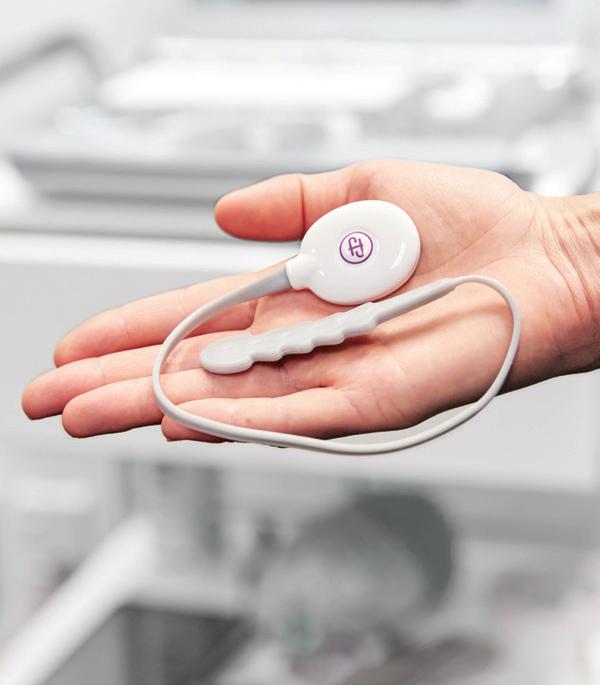
14 Sunlight’s time to shine Why the increased push for solar power and what opportunities are there for engineers?


26 Marrying indigenous knowledge and modern science A delve into world-leading environmental innovations Dr Kēpa Morgan FEngNZ’s spent decades developing. 54 Inside job


26 8 14 54
Engineering New Zealand Te Ao Rangahau PO Box 12 241, Wellington 6144 New Zealand P 04 473
inThisstated.affiliatedTetheopinionsAdvertisingDISCLAIMERPrintingbased(ECF).approvedEndorsementTheelementalStewardshipYourPRINTINGthroughforPDFEGOnlinePrintNew31forMagazineCIRCULATIONhello@engineeringnz.orgSUBSCRIPTIONS04advertising@engineeringnz.orgADVERTISINGAngeliDESIGNeditor@engineeringnz.orgJenniferEDITORehello@engineeringnz.org9444ngineeringnz.orgBlackMANAGERWinthropSALES4739444360°CirculationthetwelvemonthsendedMarch2022.Zealand13,749ISSN2537-9097ISSN2537-9100ONLINEversionsofEGareavailablemembersonourwebsiteorourEN.COREapp.coverisprintedonForestCouncil(FSC)approvedandchlorinefree(ECF)paper.insidepagesareProgrammefortheofForestCertification(PEFC)andelementalchlorinefreeEGisprintedusingvegetable-inksmadefromrenewablesources.andfulfilmentbyPrintlink.Pleaserecycleyourpaperenvelope–it’s100%recyclableandmadefromPEFCaccreditedpaper.statementsandeditorialexpressedinEGdonotreflectviewsofEngineeringNewZealand/AoRangahau,itsmembers,staff,ororganisationsunlessexpresslyissueofEGwaspublishedSeptember2022.

On the cover: JUNOFEM’s femfit®, a low-risk medical device designed to improve pelvic floor muscle function.
08NgāFeaturesāhuatangaMedtech:“eminentlyexportable”
With the promise of delivering better care and improving patient outcomes, Aotearoa’s medical technology sector is booming, thanks in part to clever engineers.
14 Sunlight’s time to shine Why the increased push for solar power and what opportunities are there for engineers?
20 Securing the food chain How engineers – and engineering – are playing their part in ensuring a resilient food supply.
26 Marrying indigenous knowledge and modern science A delve into world-leading environmental innovations Dr Kēpa Morgan FEngNZ’s spent decades developing.
30 Building “a place of transformation and healing” Which New Zealand building is an engineering first, architecturally unique, offers high levels of sustainability and is designed specifically for a community’s most vulnerable people?
38 Building te ao Māori capability What is te ao Māori capability, why is it important and how do you find it?
40 A new dawn? A look at the history of solar technology in New Zealand.
42 Intersection Crossing paths with engineers.
43 Imposter syndrome? Be sure to do all the necessary checks to ensure a job candidate is who they say they are.
44 Fusing two fields It’s increasingly uncommon to see products and projects that have mechanical aspects but don’t also have electrical aspects.
45 Why reflection is critical What is critical reflection and how can it help you in your work?
46 Measuring our dynamic coastline New projections for sea level rise and the impact of vertical land movement will help guide planning for adaptation along our coastline.
Best practice Ngā mahi papai NgāShortsrawaitūhingapotomengā pito kōrero 50 The secret life of engineers 53 Leading questions 54 Inside job 56 Bedside table 57 Review 58 Obituaries 60 Engineering genius
Despite ground-breaking computer-generated imagery being used for the majority of the legendary 1993 movie Jurassic Park, the hero of the screen is undoubtably the Tyrannosaurus rex – or T-Rex – and engineering played a significant role bringing this prehistoric beast to life. A scale model was made of the T-Rex and then sliced into small-scale cross-sections which were projected onto plywood using an opaque projector, scaling them up to full size. Projected and scaled-up sections were outlined, numbered and cut out. The cut-out pieces were assembled onto a supporting steel armature and covered in chicken wire and fibreglass to create a full-scale form over which the artists could sculpt in clay. The armature was engineered to withstand three tonnes of clay, while allowing for the internal installation of the hydraulic system needed to make the model move realistically on screen. These movements were controlled by puppeteers manoeuvring a miniature T-Rex armature rigged to the full-size model by a performance capture device, meaning all movements were mimicked. The hydraulic engineering of the T-Rex’s jaw was so strong a safety mechanism was fitted to prevent the mouth from fully closing, or the life-like killing of humans would've become way too realistic.

Engineering Envy #143 Chosen by Engineering New Zealand Te Ao Rangahau staff It made a lasting impression on me from a young age and inspired me to push boundaries in my career as a creative. Plus, dinosaurs are cool! Alisa McGrath – Programme Creative LeadPhotoStockLtd/AlamyCollectionMoviestoreImage: 03 4.5 tonnes in total weight 10 sculptors formed the model 11.2m total length from head to tail hydraulic57 movement functions USAParkJurassicT-Rex:
HIGH SHEET&FIBREGLASSIMPORTEDSPECVINYLPILES
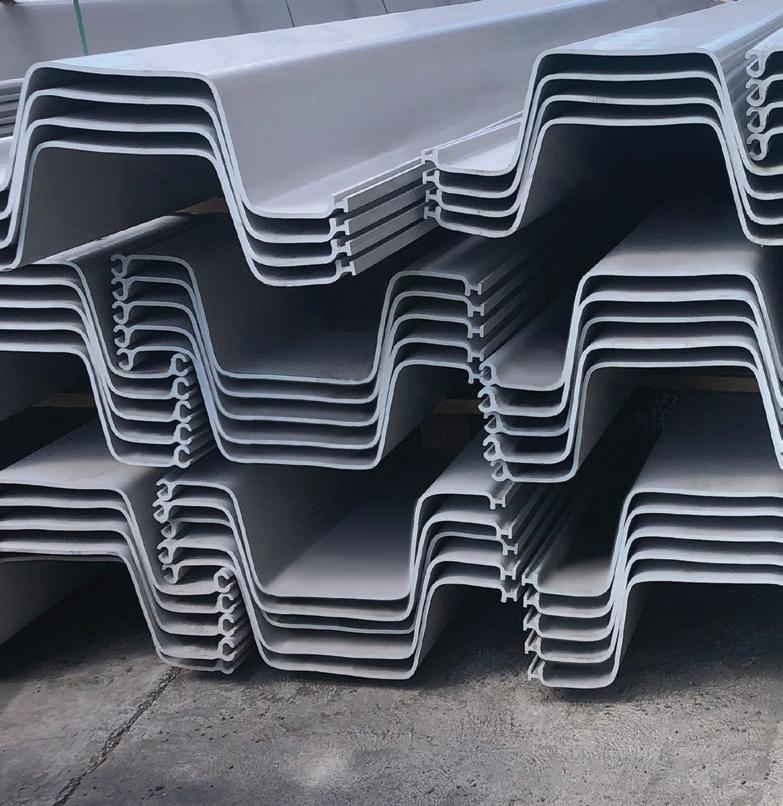


Find out more and register orwww.sheetpile.co.nz/for-engineersatemailusatsales@sheetpile.co.nz • Launching September 2022 • Imported from USA • Free CAD files available on our website • Highest spec fibreglass • Zero corrosion In addition to our core product, steel sheet piles, we are now importing top quality, high spec Fibreglass FRP (fibre reinforced polymer) and Vinyl sheet piles from the US – the first NZ company to stock these on a consistent basis.
rātouAkōrero saidtheyWhat
Vision, strategy and connection
Prince Charles talks about climate change in a speech in Cornwall during record-breaking temperatures in July.
University of Canterbury’s Electrical and Computer Engineering academic Associate Professor Stephen Weddell on a research collaboration with NASA to track Moon-orbiting spacecraft, with help from NASA’s CAPSTONE mission.
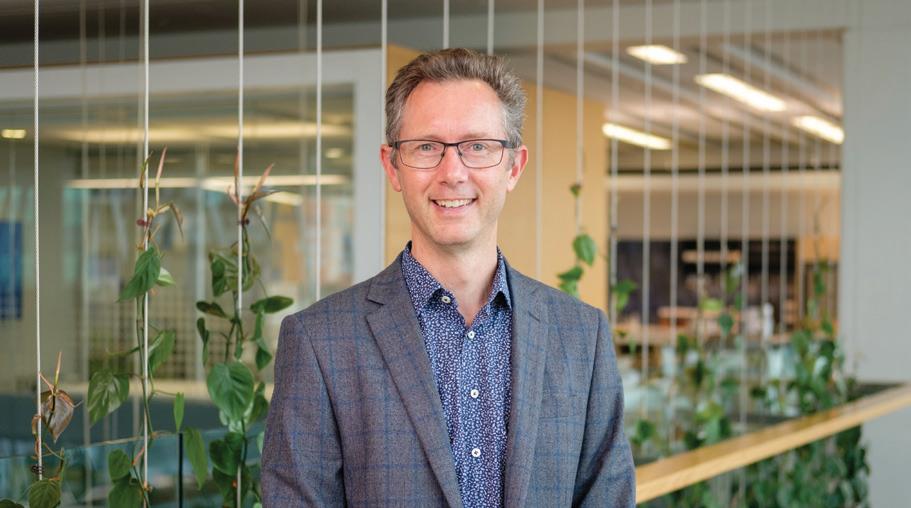
The Governing Board and Te Ao Rangahau are focused on the future, while delivering for engineers now. As President, my vision for the future is for engineers to be the leading profession in New Zealand for creating resilient, sustainable economies and communities, and solving society’s complex problems. In this edition of EG, we look at how engineers are helping to do this with an increased focus on solar energy; advances in medical technology and innovations in the food sector. All of these involve complex problem solving now, with an eye to a better future.
journey and ongoing support of the Diversity Agenda. We’ll keep working to increase our influence both in policy, and in public, to build understanding and lead the debate on important societal issues. The strategy refresh also incorporates the strategic foresighting project Te Ao Rangahau has undertaken to envision what 2050 might look like, and to backcast what the organisation and engineers need to do to get us there.
University of Auckland aerosol chemist Dr Joel Rindelaub commenting on CO2 levels and Covid-19 infection risk.
“The stadium will also be built to withstand Christchurch seismic activity not only on completion but during construction, which by any standard is a challenging and unique task.”
BESIX Watpac Chief Executive, Mark Baker on the city’s new multi-use arena.
The Board has refreshed our organisation’s strategy and the revised ambitions of “Professional, Connected, Leading and Thriving” will drive our strategic activity through to 2030. The changes are informed by what you, as members, have said you want, including increased support to become more effective engineers and for climate change action. The strategy also strongly responds to the challenges and opportunities from occupational regulation and supports our leadership areas such as our Engineering Climate Action work, our te ao Māori
At the heart of it all though, are our members, and it has been a privilege for me and our CE Richard Templer FEngNZ to meet so many of you at our recent Member Connect events around the country. Recurring themes at these events were occupational regulation, building consent issues and climate change action, which Te Ao Rangahau is already responding to.
Congratulations to our newest Fellows, Distinguished Fellows and award winners who were celebrated in August, recognised for their service and leadership as they engineer better lives for New Zealanders.
Dr Tim Fisher FEngNZ President, Engineering New Zealand Te Ao Rangahau
Nau mai koutou katoa.
“As I have tried to indicate for quite some time, the climate crisis really is a genuine emergency and tackling it is utterly essential…”
“This is a very, very early form of lunar traffic management which will increasinglybecomeuseful to help enable the safe coordination of multiple international missions focused on the sustainable exploration of the Moon.”
“I would like to see a government department or organisation take responsibility for indoor air quality.”
05
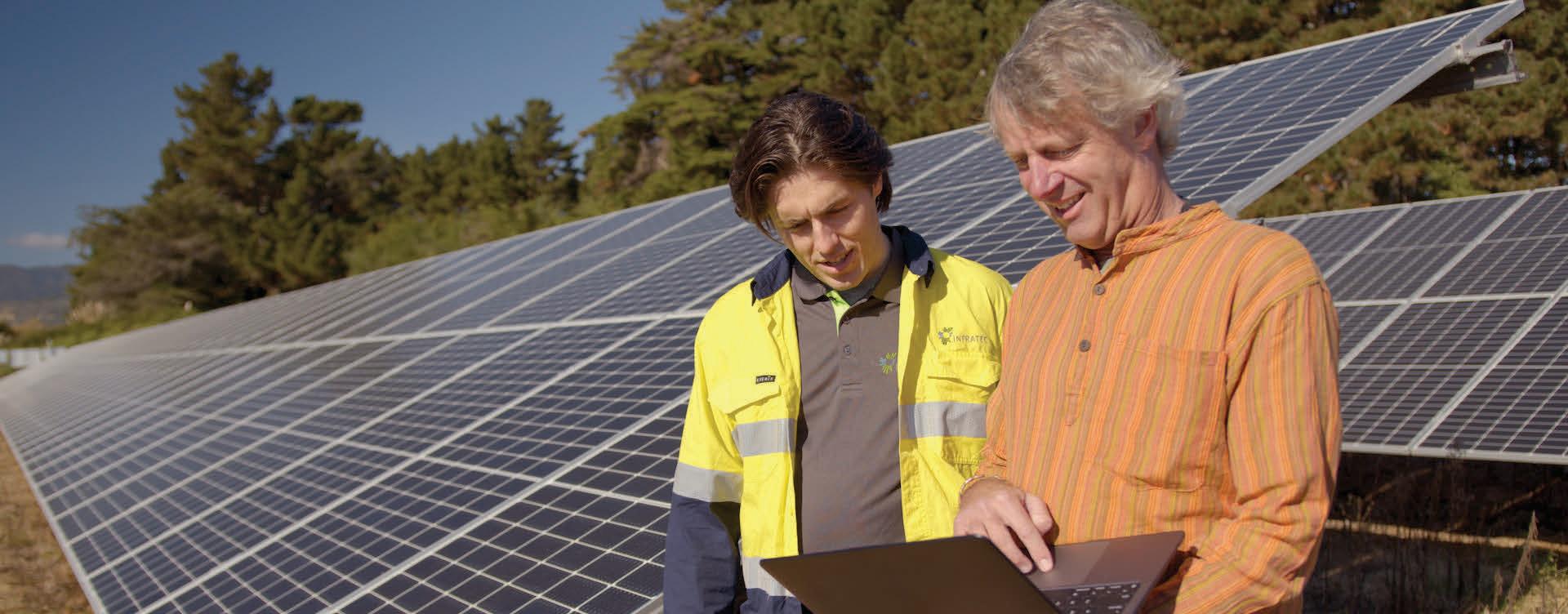

ENABLING CAREERS IN THE ENERGY SECTOR Te Herenga Waka— Victoria University of Wellington offers programmes to support the transition to a net zero carbon economy. wgtn.ac.nz/renewable-energy • Bachelor of Engineering with Honours majoring in Electrical and Electronic Engineering—specialising in Renewable Energy Systems Engineering • Bachelor of Science majoring in Renewable Energy Systems • Bachelor of Science with Honours in Renewable Energy Systems • Master of Science in Renewable Energy Systems • Master of Renewable Energy • Postgraduate Diploma in Science in Renewable Energy Systems • Postgraduate Certificate in Science in Renewable Energy Systems • Doctor of Philosophy in Engineering
08 Med tech: exportable”“eminently 14 Sunlight’s time to shine 20 Securing the food chain 26 Marrying modernknowledgeindigenousandscience 30 Building “a place of transforming and healing” FeaturesāhuatangaNgā

08 EG 20/2022
RINA DIANE CABALLAR
Medical technology holds the promise of delivering better care and improving patient outcomes through innovative devices, products, services and capabilities. And New Zealand’s medical technology sector is booming, thanks in part to clever engineers and clever engineering.
Fisher & Paykel Healthcare's Airvo 3 device supports nasal high–flow therapy. Image: Fisher & Paykel Healthcare

>> Med exportable”“eminentlytech:WRITER|KAITUHI
09Feature | Āhuatanga
Medical technology is Aotearoa’s biggest secondary industry, generating $1.9 billion in revenue, with med tech firms comprising 11 percent of the nation’s top 200 tech Distinguishedbusinesses.Professor at the University of Canterbury’s Department of Mechanical Engineering, Geoff Chase DistFEngNZ, says New Zealand has unique advantages and “a lot of strength throughout this country in med tech-oriented research”.

“We’re able to directly partner with clinicians in hospitals for faster collaborations, with good ethics guidelines and procedures to enable clinical testing.” He’s part of the neonatal glucose studies team recently awarded the 2021 Prime Minister’s Science Prize for devising new methods to diagnose and treat blood sugar imbalance in newborn babies. He has also worked on a glycaemic control model used in intensive care units in Christchurch hospitals and around the world, as well as a vibration-based imaging system for breast cancer screening, inspired by earthquake engineering principles.
Innovative medical devices
From research to industry, the sector is flourishing with the help of engineers. Established in 1968, Fisher & Paykel Healthcare designs and manufactures therapies and products for respiratory care, surgery and sleep apnoea. The company was named Company of the Year and Managing Director and CEO Lewis Gradon won Chief Executive of the Year in the Deloitte Top 200 awards in
2020. Lewis, who joined the company in the 1980s as a product engineer, says: “We are known for having innovative medical devices and we have about 800 people involved in R&D, which is what we would most closely relate to engineering.”
Volpara Health is another front-runner in the sector, making a name for itself since launching its artificial intelligence (AI)-powered breast screening software in 2009. Founder and Chief Science & Innovation Officer Ralph Highnam’s PhD in engineering science helped him steer Volpara in the right direction.

“Volpara’s software revolves around AI that works rather than AI that’s hype, and having a background in maths, computing and X-ray physics is key to understanding how breast images are formed and critical to robust and reliable image processing,” Ralph says.
“My training as an engineer has given me the ability to think logically and deal with complex situations.”
In the research realm, the Auckland Bioengineering Institute (ABI) at the University of Auckland applies its expertise in engineering sciences and technical innovation to improve medical diagnosis and treatment of injury and disease. ABI’s work spans from medical devices and individual organ models to advances in surgical engineering and medical imaging. It has sparked more than 20 startups since its inception in 2001, including Formus Labs, which created an automated 3D planner for joint replacement surgeries; JUNOFEM, which devised a pelvic floor training system to help women manage urinary
4. Alimetry's wearable sensor device. Image: Auckland Bioengineering Institute 1
1. Distinguished Professor Geoff Chase DistFEngNZ. Image: University of Canterbury
2. Digital Imaging-based ElastoTomography elastographic breast cancer screening technology. Image: Tiro Medical
3. Dr Hayley Reynolds (right) analysing prostate cancer imaging. Image: Auckland Bioengineering Institute
>> 2
10 EG 20/2022
incontinence; and Alimetry, which created a non-invasive wearable sensor device to investigate gastric disorders.

Dr Hayley Reynolds is leading a cancer imaging research group at ABI. Hayley and her team use medical imaging to develop tools and technologies that help clinicians treat melanoma, breast cancer, prostate cancer and lymphoedema (swelling in the body from a dysfunctional lymphatic system, which can be a side effect of cancer treatment). Her work in prostate cancer involves developing imaging biomarkers from multiparametric MRI, a type of MRI scan that produces a more detailed picture of the prostate gland.
“We look at the change in tumour biology as a result of the radiotherapy that’s been given and assess how well a patient has responded to it,” Hayley says. “We have done a lot of work to compare MRI images of the prostate with histopathology data to get a much better idea of what we’re seeing. This has allowed us to develop AI methods that can predict tumour location as well as the biology of tumours from MRI, and from that design radiotherapy treatment plans that are better than the current standard of care.”
Hayley’s PhD in bioengineering and degree in engineering science helps inform and advance her “Beingresearch.abioengineer, I’ve got the technical training to understand clinical requirements but also apply my engineering knowledge to come up with solutions to problems.”
Meanwhile, Māori health organisations are also making waves in the med tech industry. Māori-owned and operated Emergency Q built an app to help hospital emergency departments and urgent care clinics manage capacity. Cultural creative agency KIWA Digital has partnered with the Ministry of Health to develop apps for better Māori wellbeing, such as Māmā Aroha to provide information on breastfeeding, and Tuku Iho to share intergenerational knowledge in maternal and child wellbeing.
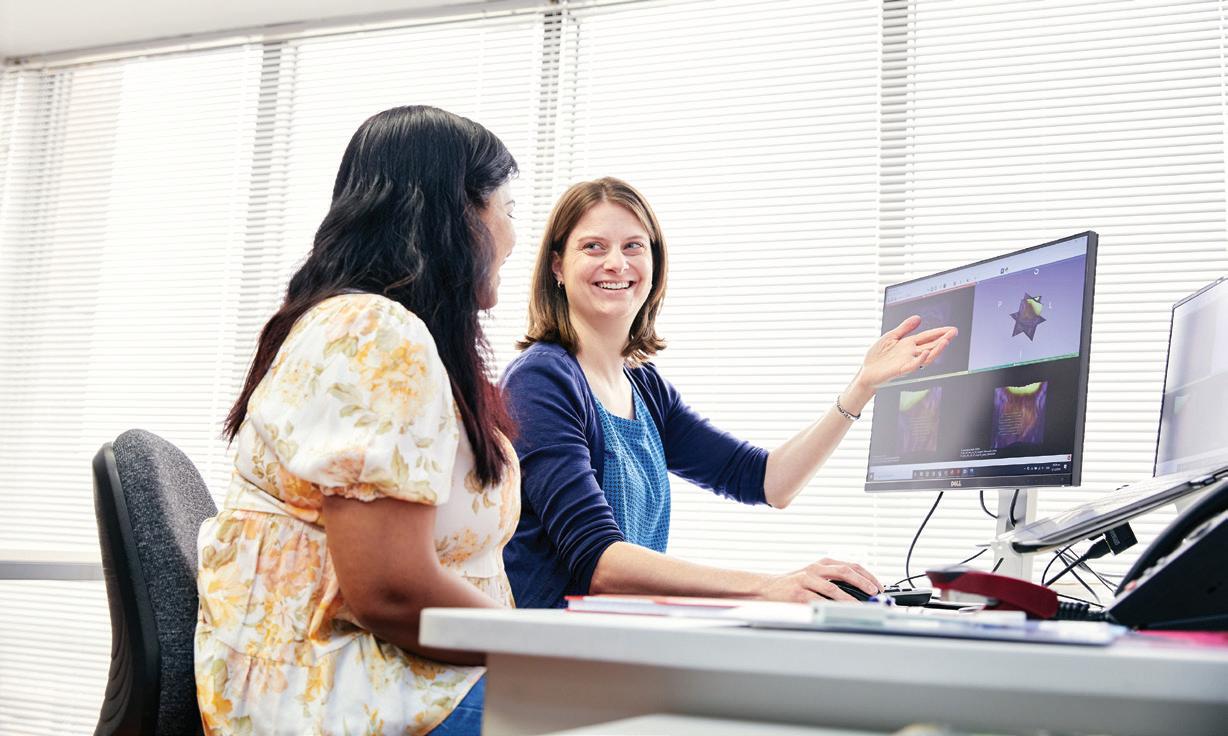
>> 3 4 11Feature | Āhuatanga
Investing in the sector
Despite its successes, the medical technology industry faces hurdles to its continued growth. Funding is a challenge, especially for startups.
“What investment there is in New Zealand tends to be relatively risk-averse compared to overseas. We need to invest more in our bright ideas, and in enough of them so we can keep those companies in New Zealand and let them grow to global size from here,” Geoff Chase says.
“We need to invest more in R&D and the infrastructure around that, like universities, publicly funded research, privately funded research and the mechanisms by which companies invest in research.”
The Government has heeded this call, increasing its investment in the field through Te Tītoki Mataora, the MedTech Research Translator, which aims to turn research into real-life solutions that meet healthcare needs. Similarly, the Health Research Council has funding opportunities, including for Māori and Pacific health research, while Callaghan Innovation’s HealthTech Activator offers programmes and services targeted to early-stage healthtech businesses.
Robots take byte of healthcare sector
The University of Auckland’s Professor Elizabeth Broadbent specialises in human-robot interaction, and she and her colleagues conduct many studies in rest homes or retirement villages.
“This is a good place to deploy robots because there’s such a shortage of healthcare workers in this area.”
One study she led involved people with mild cognitive impairment, where robots played games with them to help improve their memory and reminded them to take their medication and do their daily activities.
“Most people are fairly positive about having the robots,” says Elizabeth.
“They enjoy having a robot in the house because they often live alone. Our studies have shown that robots can help improve mood, reduce loneliness in older people and increase adherence.”
Elizabeth believes there’s promise in using robots for anxiety and depression. A successful example is PARO, a companion seal robot made in Japan that has been tested in New Zealand and is currently used in the Selwyn Foundation’s retirement villages.

“Some of the more successful studies have been with pet-type robots like PARO. People can cuddle it on their lap and it helps calm them down and reduces agitation, just like an actual pet can.”
Aside from physical robots, Elizabeth is also working with virtual ones — the digital humans of ABI spin-out and AI tech company Soul Machines.
1
Bridging the knowledge gap
In addition to funding, the lack of engineers is another“Therechallenge.wereenough high-quality engineers before the pandemic, but since then, it’s been hard to bring people in and there’s a shortage now,” says Volpara’s Ralph Highnam. As a result, people from other fields who can apply their skills and knowledge to medical technology are appealing.
While a large proportion of Fisher & Paykel Healthcare’s workforce is local, they also bring in overseas talent.
“We’re able to attract people from outside New Zealand when the skills are not available here,” Lewis Gradon says.
While the medical technology sector employs a variety of engineers crucial to its development, they need to overcome the learning curve of combining engineering with medical “Engineerssciences.aregood at finding the root problem and solving it, but to do that in medical technology, you have to understand the clinical medicine and physiology behind it so you can solve the right problem,” says Geoff.
Volpara addresses this learning curve with training.
“We have been doing some studies to see whether we can use digital humans to increase relaxation, improve loneliness and reduce stress, and the initial results are promising,” she says.
“We are also investigating empathy between people and digital Elizabethhumans.”obtained an Honours degree in electrical and electronic engineering at the University of Canterbury before pursuing a Master’s degree and PhD in health psychology.
“Starting out in engineering, you learn how to programme and build things,” she says.
“It helps you realise what’s possible — the capabilities and limitations — and where the problems are so you can design studies appropriately.”
>>
12 EG 20/2022
“Our employees continuously learn about the breast and breast cancer, biology, physiology, pathology and X-ray physics,” Ralph says.
“We also have clear and established processes because in our medical world, if you make a change, you can’t just roll it out – it has to be independently tested. We require engineers who are used to processes, can deal with documentation and understand that what they’re doing is so mission-critical that if they get it wrong, they could potentially hurt someone.”
For Fisher & Paykel Healthcare, bridging the knowledge gap involves on-the-job training as well as combined teams of clinicians and engineers.

“We tend to organise our R&D teams around the application, so our neonatal team, for example, includes neonatal experts and software and electronics engineers,” says“AnLewis.engineering qualification gives a base technical skill set, but innovation comes from understanding the application.”
Creating a global impact
While medical technology has made significant contributions to better healthcare in New Zealand, the field also has the potential to create a global impact.
“Medical technology is an eminently exportable knowledge because health has always been a universal concern,” Geoff says.
According to the 2022 NZ-US Trade Relationship Report from the New Zealand-US Council, medical instruments garnered the fifth spot in New Zealand’s top 30 exports to
– Lewis Gradon
the United States in 2020. At NZ$260 million in 2020, sleep apnoea machines now account for a larger share of New Zealand’s exports to the States than timber or casein.
Meanwhile, Volpara’s software is in use in more than 2,000 facilities worldwide, with one in three breast cancer screenings in the US now taking place with the help of their Beyondsoftware.exports and expansion, Geoff believes the biggest untapped opportunity for engineers lies in the ability to improve healthcare while lowering costs.
“I tend to view medical technology through the lens of how to provide better care at lower cost,” he says.
“Any place you see a large leverage point of cost – be it cancer, cardiovascular disease, chronic disease, diabetes, intensive care or pulmonary disease – where better care can significantly alter the outcome for the patient as well as reduce the cost, is an untapped opportunity.”
An engineering qualification gives a base technical skill set, but innovation comes from understanding the application.
1. PARO, a companion seal robot used in Alphavillages.retirementImage:Lifecare 2. Reseachers at Fisher & PaykelImage:Healthcare.PaykelFisher&Healthcare 2 13Feature | Āhuatanga
MATT PHILP
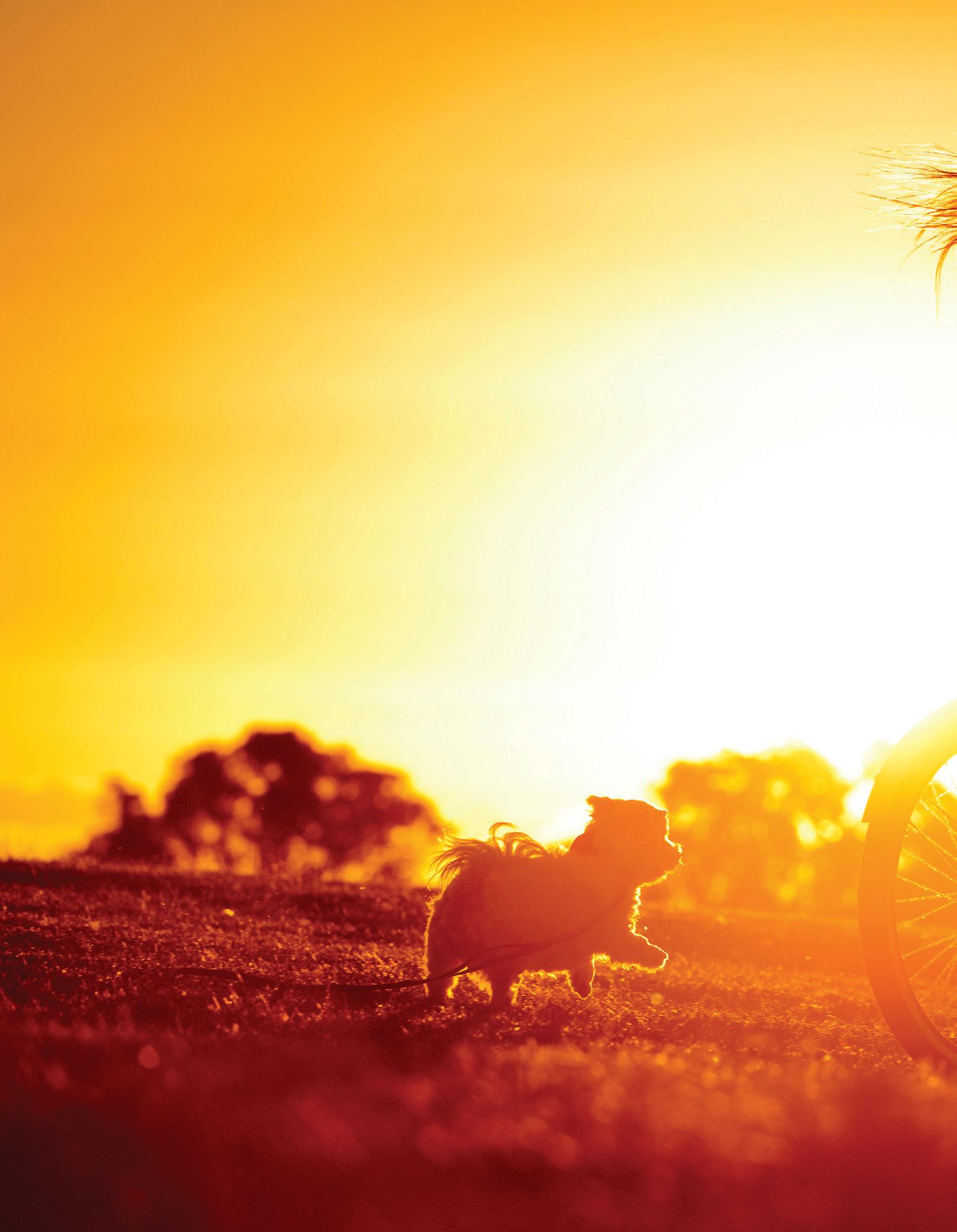
timeSunlight’stoshineWRITER|KAITUHI
14 EG 20/2022
For years, solar energy in New Zealand was the black sheep of the renewables family – exciting in the abstract, but a bit flaky to bet the house on. Suddenly, however, the game has changed – so much so, that people are talking about a solar “gold rush”. So, what’s behind the increased push, and what opportunities are there for engineers?

>> 15Feature | Āhuatanga
There are roughly a dozen businesses in Aotearoa currently planning solar projects that cumulatively will be capable of producing four terrawatt hours (TWh) of renewable energy a year. Companies to have recently revealed their solar ambitions include Helios Energy, which plans to invest $1.3 billion on solar farms with a combined maximium capacity of one gigawatt (GW); Lodestone Energy, which in June secured $300 million to build five solar farms in the North Island; and Nova Energy, which is seeking consents for a massive 400 megawatt (MW) solar farm near Taupō and has bought land in the South Island with an eye to establishing another 300MW farm.
The rising of the sun
Why the sudden flurry of interest? For one, the cost of building solar has steadily declined thanks to economies of scale and the learning curve effect, while wholesale electricity prices continue to climb. Bigger picture, the push to decarbonise will produce significant growth in electricity demand, and that’s going to have to be met by renewables. Predictions vary widely, but a rough consensus is that supply in 2050 will need to be 70 percent more than today, due to electrification of transport, plus decarbonising industrial process heat and population growth. Meanwhile, the Government has set a target of 100 percent renewable energy by 2030. Some will come from wind, some from geothermal and small hydro, but there’s an obvious opportunity for residential and commercial rooftop solar, and utility-scale solar farms.
Engineering will play a big role in this sun-sized future, says Dr Allan Miller, an electrical and electronic engineer and co-founder of ANSA, a new Christchurch-based tech company that provides services to integrate low carbon technologies such as solar into the national grid.

“If you’re building a solar farm there are civil earthworks, land suitability and access issues involved. If you’re putting a solar array on a building there are clearly also structural issues to consider,” Allan says.
Obviously, there will also be growing demand for electric power engineering.
“In that area, there’s a real shortage of skills – and that’s not even considering solar. The whole decarbonisation challenge requires electric power engineers who can build the systems and manage the infrastructure. There’s a real need to train more of those in New Zealand.”
Making energy while the sun shines
Where are the opportunities for solar? And what are the challenges? Allan reckons commercial rooftop solar has great potential, with a nice match between daytime generation and load. Irrigation is another area to exploit.
“As you’d expect, solar resources are best where irrigation demand is highest, and irrigators tend to work through the day not just at night,” he says.
– Allan Miller
Residential, however, is more problematic because solar does its thing when most of us are at work, and household demand peaks around dinner time.
It’s part of a larger conundrum.
“Our solar generation doesn’t match the overall electricity demand – demand peaks in winter when generation is lowest. However, it is becoming more economic to oversize solar arrays, and the concept of spilling energy in summer is becoming more palatable. Also, solar farm owners will find uses for that excess energy in summertime, such as for irrigation or even producing hydrogen in the future.”
Catching some rays
Storage comes in here.
“We already have it in the form of hydro – our existing hydro could work well with solar for most of the year. But as we increase our use of electricity there’ll probably
I think solar has huge potential in New Zealand. Absolutely massive.
>> 1 16 EG 20/2022
be a need for other forms of storage that can supply energy over the winter period when hydro inflows are low.
“I don’t think lithium ion batteries are the answer; instead, it may involve ‘notional’ storage in the sense of oversizing renewables.”
We also need to get a better understanding of the capacity of the network to accept solar exports – say from a household wanting to sell excess generation during summer months.

“We’re used to electricity flowing one way,” Allan says, adding that reversing flow carries a risk of congestion issues.
None of which should detract from the upside of exploiting the resource in sunny regions such as Nelson, Northland and Hawke’s Bay.
“I think solar has huge potential in New Zealand. Absolutely massive.”

Turning up the (sun)dial
You’ll get no argument from Jason McDonald, who also trained as an electrical and electronic engineer, and is a Director of Helios Energy. The United States/New Zealand venture is currently working on project design for 10 large grid-connected solar farms in the North and South Islands. The first is expected to begin generating power in 2024 and others to follow at a rate of perhaps one a year.
1. Dr Allan Miller, co-founder of ANSA. Supplied Jason McDonald, Director of Helios Energy. Image: Helios Energy
>>
Image:
2.
2 17Feature | Āhuatanga
“Everyone in solar is rushing to the start line a bit like the Le Mans car race, but this is going to be a 25-year journey,” he remarks.
Eventually, Helios will be generating a GW, with the scale of each of the 10 farms dictated by constraints around grid connections, terrain and parcel sizes. The farmland involved can continue to be used for grazing stock, he notes.
“Solar is a bit like wind in that it can co-exist with agricultural activities – farming the sun and farming theInland.”terms of technical challenges, solar is pretty straightforward, reckons Jason, pointing out that the panels and inverters are now relatively standardised.
“Really, solar is more of a supply and logistics challenge: how do you bring all the pieces together and do something at scale? The engineering involved is a lot to do with supply logistics and the construction and deliverability of a project.”
Following the sun
Meanwhile, Lodestone Energy is close to breaking ground on the first of a suite of solar farms that will produce an annual output of 400 gigawatt hours (GWh) – enough to power 50,000 homes. Headed by retailer Pulse Energy’s former CEO Gary Holden, who is trained in mechanical engineering, Lodestone has sites earmarked in Northland, Bay of Plenty and the Coromandel. Collectively, the project
 – Jason McDonald
– Jason McDonald
will deploy half a million bi-facial solar panels, equipped with single axis tracking technology so they can follow the path of the sun and set high to allow for cropping and grazing underneath and between rows.
Building solar farms in New Zealand has some different challenges to a place such as Australia, says Lodestone’s General Manager of Engineering Peter Apperley, who cites higher wind speeds, potential for flooding and complex geotechnical conditions as complications requiring specialist engineering input. Lodestone’s five farms will range from 20MW to 45MW in size, and most will be embedded in distribution networks rather than the national grid.
“We reckon that’s the sweet spot, rather than build 200MW of solar from a single site. It gives us some

Everyone in solar is rushing to the start line a bit like the Le Mans car race, but this is going to be a 25-year journey.
Christchurch Airport's proposed Kōwhai Park project will involve a 150MW solar farm across 220 hectares. Images: Christchurch Airport
>> 18 EG 20/2022
diversity to deal with the various engineering and commercial challenges that can crop up, while still getting economies of scale from delivering the portfolio as a single project.”
Brighter future for marae
In Tauranga, iwi-owned sustainable energy company Tū Mai Rā Energy (TMRE) has a range of solar projects on the go, including rolling out a marae-based network. Launched in 2020, the Rangitāne venture has already completed solar installations at six North Island marae and intends to do as many as it can.
General Manager Matiu Taurau says going solar will help marae save money – power tends to one of their costliest overheads – and it also chimes with the desire to be more self-sufficient. He notes, too, that marae tend to be used in civil defence emergencies.
“They really need reliable power.”
How is tikanga Māori incorporated in TMRE’s work? Matiu cites several values.
“The first is pūkengatanga, or knowledge and expertise: there’s a lot of education about what solar is, and how to live efficiently with solar. There’s also kaitiakitanga – in this case, making sure to respect and enhance marae assets. And there’s whanaungatanga. Our iwi has been around 1,000 years and will be around another 1,000, so building long-term relationships is important.”
Sky-high plans
Christchurch Airport also brings long-term thinking to its ambitious solar plans. In December, the company announced a 30-year plan for a massive renewable energy development known as Kōwhai Park, with phase one involving a 150MW solar farm on 220 hectares at its Christchurch campus. Likely to come on stream in 2024, this first array will be 50 times larger than anything currently in operation in New Zealand.
“This isn’t a response to the solar environment,” explains Nick Flack, General Manager of Planning and Sustainability and project lead for Kōwhai Park.
“Rather, it’s a response to future requirements of aviation as it decarbonises and there are hydrogen and electric aircraft using our site,” he says, noting Sounds Air has already ordered its first electric aircraft, a 19-seater slated to arrive in 2026.
“Going solar will also allow us to carry out onsite hydrogen production and potentially sustainable aviation fuel production, as well as enable green data centres and vertical farming right next to the airport.”

It’s a bold plan, but Nick points out that Christchurch Airport became the world’s first climate positive airport and isn’t daunted.
“If we can do this and it comes off successfully, we will be ahead of most airports in the world.”
19Feature | Āhuatanga

tomitigationsustainable“higherUkraine)ClimatechaintheSecuringfoodchange,Covid-19,conflictsandwars(thinkareleadingtodiminishedfoodsuppliesandgrocerybills.TheUnitedNationwarnsofahurricaneofhunger”.Thenthereareissuesaroundgrowthpracticesandclimatechangemeasures.So,what’sbeingdoneherehelpfindsolutions,bigandsmall?WRITER|KAITUHI JULIET PALMER 20 EG 20/2022

>> 21Feature | Āhuatanga
With New Zealand producing enough food for about 40 million people, food security might not affect us directly, but we do have an issue with food equality caused by complex social issues. However, New Zealand still needs to play its part in ensuring a resilient global food supply, says David Hughes, CEO Plant & Food Research.
“Food security is a global concern with multiple drivers. Climate change, for example, will influence where and how we grow food.”
He says: “Having engineers working alongside biologists will help find some of the solutions.”
“We have to build resilience into the supply chain, which can be massively affected by geopolitical issues, natural disasters and pandemics directly affecting our plant and animal food sources.”
Reducing food production’s carbon footprint before 2030 and our net zero carbon goals is another consideration.“Plantsemit less carbon than animals, but there’s room for improvement. We need to work on ensuring efficient tractor use, food chilling and transportation methods, and to consider the fertilisers we use and how we use them.”
David says growing close to consumption is becoming popular in many countries. It can mean creating new growing systems to grow food in controlled indoor environments.
“We already do this with tomatoes, capsicums and strawberries. Leafy greens are being grown in vertical
farms. The next evolution will see us growing large perennial trees and vines indoors.”
Going greener
A company aiming to create food systems that provide for humanity in partnership with the environment is Christchurch-based Leaft Foods. While looking for ways to reduce food production’s environmental impact, Leaft co-founders John Penno and Maury Leyland Penno FEngNZ developed a way of extracting high-quality, versatile protein from leaves. Called Rubisco, the planet’s most abundant source of protein is found in all green leaves, Maury says.
“But while Rubisco’s trapped inside a plant cell, humans can’t eat – or digest – enough for a sufficient serving of protein. We’re extracting it using a food-safe technology that starts by juicing crops like lucerne and oats. The resultant protein powder has a complete amino acid profile similar to beef.”
Maury lists several benefits: Rubisco is highly digestible, tastes neutral and is soluble (not gritty). It’s versatile and blends into various formulations. It has no known allergens for Furthermore,people.Rubisco’s potential as an additional food source that won’t sap the environment looks positive. Its carbon footprint is 10 times lower per hectare than conventional dairy protein. Nothing is wasted, either. The leftover silage makes low-emission, low-nitrogen animal feed.
After validating the technology in the lab, Leaft’s next phase is scaling the process to industrial size. Engineering team lead Dr Anne Gordon calls this “a rare design challenge”.
“Every day, our chemical-process engineers work on design optimisation and scale-up using traditional and new processes. Our mission is to develop a design that’s truly sustainable and as energy efficient as possible. It’s a very cool project to be involved with.”
Her team includes biotechnologists and food engineers.
“Their goal is turning the extracted ingredients into great food,” Anne says.
“The raw materials are similar to dairy at a macro level in relation to composition of fats, carbohydrates and protein. But the process doesn’t work in the whey protein isolate process. Nuances in the raw materials present other technical hurdles.”
Maury adds: “We have a long way to go in collecting more data and defining the impact of the Leaft system, but we’re excited about what it could mean for the future of
Signallingfood.”Leaft’s technology’s potential, earlier this year the team raised a US$15 million investment, including Khosla Ventures (early Rocket Lab and LanzaTech backers), Ngāi Tahu Holdings via their New Economy Mandate and ACC’s Climate Change Impact Fund.
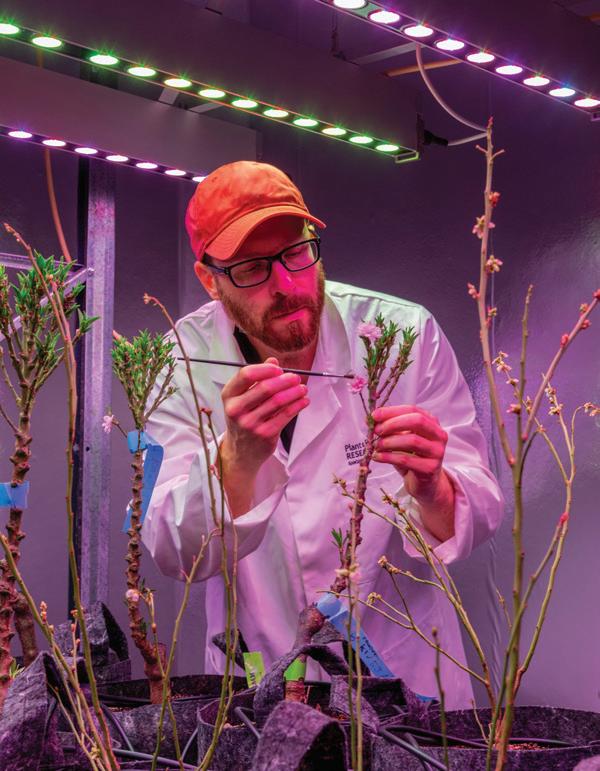
>> 1 22 EG 20/2022
1. Plant & Food Research scientists are investigating growing crops in indoor controlled environments.
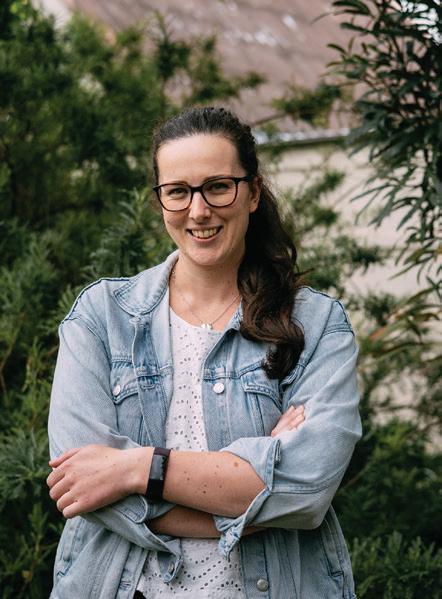
Image: Plant & Food Research
2. Rubisco, a protein powder extracted from crops like lucerne and oats.

Image: Leaft
3. Dr Anne Gordon.
Image: Jerome Warburton
4. From left: Maury Leyland Penno FEngNZ, Ross Milne and John Penno.Image: Jerome Warburton

>> 2 4 3 23Feature | Āhuatanga
Soil moisture matters
As food security depends on weather and land use, information about climate and land change is critical. Soon a New Zealand/National Aeronautics and Space Administration (NASA) collaboration will start adding high-resolution data to the knowledge bank.

The Rongowai (sensing water) mission involves an advanced Global Navigation Satellite Systems Reflectometry sensor being mounted on an Air New Zealand Q300. It will collect high-resolution, unique samples as the plane flies over the country, says University of Auckland’s project lead, eminent engineer Professor Delwyn Moller.
“We’ll get this rich network of information on soil moisture and inundation over many years and seasons, of a duration relevant on climate scales for climatology. This will help people make choices affecting sustainability and food security.”
She says: “Rongowai will highlight the impact land use is having, which areas are drought-prone, differences between regions, and resiliency towards droughts and
Oncefloods.”thedata has been calibrated and validated it will become publicly available –probably several months after September’s installation.
Send in the robots
Several Government-industry funded partnerships are also researching food production practices and opportunities. These include an advanced greenhouse cropping system, pasture health and management, regenerative farming and biodiversity projects.
One such research project is a Southern Fresh Foods’ pilot, testing growing methods for leafy salad vegetables and herbs using an advanced greenhouse cropping system. Announcing the partnership earlier this year, Minister of Agriculture Damien O’Connor said: “We’re looking for consistently high, year-round volumes of quality produce with a lighter impact on the environment."
The technology involves an automated moving gully system that uses robotics to optimise space usage based on the plants’ life stage and size, something the Minister describes as a “climatic-based system and highly technical”. He says the system can achieve substantial yields using significantly less land and reduced environmental impacts from using less water, fertiliser and pesticides.
And as the name suggests, Tauranga-based Robotics Plus also focuses on robotic technologies – autonomous ones – to help address shortages in horticulture and agriculture, and to help create a sustainable and competitive future for the food sector. Founder and CEO of the multi-award-winning company, Steve Saunders, says: “Increasing demand for fresh produce in a labour-constrained market means growers and postharvest operators need automation, particularly during seasonal labour peaks like spraying, pruning, harvesting and packing.”
He adds: “To reduce reliance on seasonal and migrant labour, we must change how food is harvested, sorted and packed with smart engineering, robotics andTheautomation.”AporoIIautonomous robotic fruit packing machine uses AI and neural networks to identify and manipulate fruit during packing. It can pack the equivalent of two to four people, with greater consistency and reliability. It is already used in packhouses here and overseas. The company is also developing and deploying autonomous vehicles to undertake on-orchard and horticultural tasks such as spraying, crop analysis, mowing and trimming.
Supplying the smarts
Given the science securing the food chain from lab to lunch, we’ll need to be smart and resilient.
“The shift in technology will require engineers and plant scientists to create the ideal environment,” says Plant & Food’s David Hughes. Leaft’s Anne Gordon thinks engineers will cope.
“Our engineering schools and departments actively pursue ways to respond to new technology challenges.”
Image: Lauren Dauphin/ NASA Earth Observatory
>> 24 EG 20/2022
– Professor Daniel Holland
Southern Fresh Foods' FoodsSouthernsystem.greenhouseadvancedcroppingImage:Fresh
University of Canterbury Civil and Natural Resources Engineering Professor Daniel Nilsson says sustainability is a theme running through all of the University’s engineering courses.
“Civil engineers are taught to take a whole systems approach to their work. Their role in the food supply chain is to ensure infrastructure – like buildings, water supplies and transport routes – is resilient to changing climate and other environmental hazards.”
Professor Daniel Holland MEngNZ from the University’s Department of Chemical and Process Engineering is also positive. Researchers within his department investigate environmentally sustainable ways to produce food, from plant-based milk alternatives to novel fertiliser technology.
“We’re supplying a regular stream of graduates to join the food industry,” he says.
“They’re using their chemical engineering skills to develop innovative food processes that reduce environmental impact from farm to plate.”
Grow your own – indoor microgreen gardening
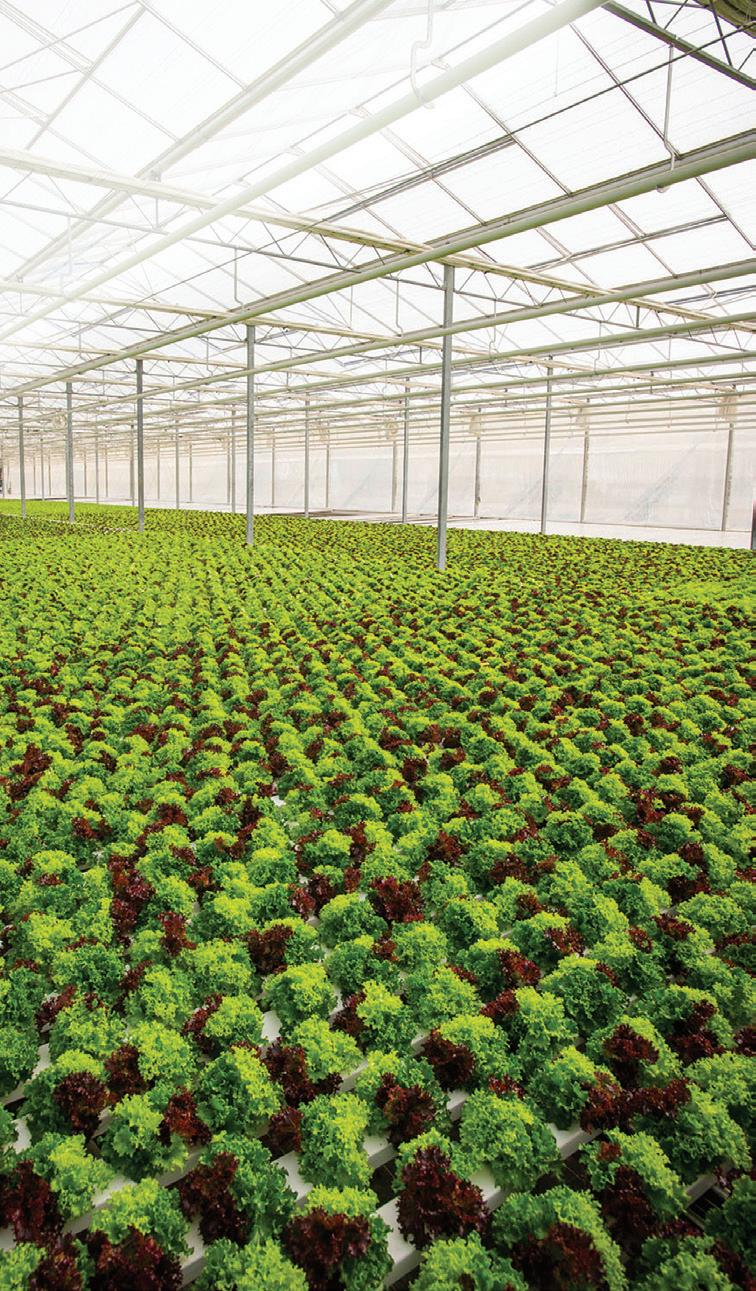

Today, people without gardens who don’t like dirty hands but want home-grown food can live their dream. It took a bit of work though. Creating an environmentally-friendly, soilless microgarden that fits on a windowsill saw Thomas Lau MEngNZ of The Foliage Company repurposing disciplines he acquired at engineering school.
He says he treated the project as an engineering challenge, setting his objectives, following project development methodologies, creating CAD drawings, testing and later, undertaking postproduction refinement.
The result met all his objectives: a set of attractive, biodegradable, reusable, clean, indoor microgardens, complete with moisturewicking grow mats, veg and herb seeds.
They’re using their chemical engineering skills to fromenvironmentalprocessesinnovativedevelopfoodthatreduceimpactfarmtoplate.
CompanyFoliageTheImage: 25Feature | Āhuatanga
Marrying modernknowledgeindigenousandscienceWRITER|KAITUHI
ALEXANDRA JOHNSON PHOTOGRAPHER | KAIWHAKAAHUA ANNE PAAR
He has spent decades developing worldleading environmental innovations that marry modern science with indigenous knowledge, but the achievement that makes this engineer most proud is closer to home.
Dr Kēpa Morgan FEngNZ (Ngāti Pikiao of Te Arawa) lives in an idyllic sustainable village at Whenuakura, Rotoiti. It features no-maintenance roads that eliminate stormwater, low-impact water use and houses created from sustainable materials. While that might not be so extraordinary now, Kēpa designed this multi-house development for his whānau in the 1980s, when the concept of sustainability was almost unknown, particularly in engineering and construction. But this ardent environmentalist, mana motuhake (self-determination) advocate, academic and civil engineer has run ahead of the pack his entire career. He’s spent decades developing world-leading environmental innovations that marry modern science with indigenous knowledge, a practice the world is only now properly catching up with.
Kēpa was the first person in his whānau to attend university.
“I was going to leave school early and become a mechanic, but my father said
one night at the dinner table, if you want to leave school, you can leave home. He basically meant, put your fork down and go,” Kēpa laughs.
So, on he stayed, furthering his education until he completed a Bachelor of Engineering (Civil) at the University of Auckland in 1985.
Kēpa says his university days were not easy and he was the only Māori student in a faculty renowned for its blatant racism. “I didn’t spend a lot of time there, the material was entirely monocultural, a total denial of my existence.”
A successful 30-year career in civil engineering followed, which included the development of combining rammed earth technology with harakeke (flax fibre), and integrating mātauranga Māori with science and engineering, to create low-cost, earthquake-resistant housing solutions.
But when the engineering faculty at the University of Auckland was subject to a critical external audit, the then Dean invited him back to make the faculty more inclusive and encourage Māori and Pasifika students to enrol and succeed.
Before the academic year began, Kēpa says they would take the new students to a marae and “turn their world upside down”. They’d be welcomed solely in te reo Māori and given a university-level maths test.
“We’d break them, it doesn’t take long,” he“Thensays. we’d bring in the senior students and say, so you might not be feeling up for this, but you listen to them because they know how to survive. Then we played rugby, paddled waka, and built relationships around every single student. At the end of the stay we would say, look around, if any one of you fails, we all fail.”
For the following decade, Kēpa used this collaborative and supportive approach to facilitate significant Māori student improvements in academic performance to become the highest performing cohort at the university for two years running, until his programme was dismantled.
Once back within the university, however, Kēpa became an academic, researcher and lecturer, and most significantly, for his doctorate and in response to declining water quality of the Waiariki (Rotorua) district lakes, he created the Mauri Model Decision Making Framework, an innovative decision-making tool. The model considers a range of worldviews, from mātauranga Māori to engineering and science, and uses the concept of mauri (lifeforce) as the measure of sustainability, observing the four dimensions of environmental, cultural, social and economic wellbeing.
26 EG 20/2022

The roads, the power, the stormwater solutions were designed based on the first principles of te ao Māori, our way of knowing.
>> 27Profile | Kiwhaiaro
“Pre-colonisation Māori had a very sophisticated way of observing,” explains Kēpa.
“They understood, for example, the influence of the moon, the seasons, the sun and other things, such as Matariki.”
Kēpa says if you intrinsically understand what normal is, you understand what isn't.
“And it’s those outliers, [or positive or negative abnormalities] that give you the opportunity to optimise your efforts. If it is positive, such as putting a rāhui on an area when fish are spawning, so you get the maximum benefit in the future, or if resources get depleted, you know you must allow it to regenerate.”
The model, along with the mauri0meter, which imparts simply the complex information the model has exposed, was later used to aid environmental recovery following the shipping disaster Rena in the Bay of Plenty, and it is currently being applied to freshwater challenges and the Three Waters reform.
“Science is generally broken down into small fragments of knowledge, but with this system you put it back together so you actually know what’s going on. In the case of Rena, there were multiple mauri0meters to describe the scientific impact across a range of metrics.”
His company Mahi Maioro Professionals, where Kēpa is General Manager, is building interactive webpages that communicate real-time changes in bio-physical parameters, alongside mātauranga-based indicators that impact upon te mauri o te wai (lifeforce of water).
“These mauri-based ways of reporting help with meeting obligations to Te Mana o te Wai, and are relevant to the Three Waters reforms, identifying solutions that are more equitable in delivering improved wellbeing.”
When asked how the engineering profession and Te Ao Rangahau can be more inclusive of Māori, Kēpa says more needs to be done at high school.
“High schools are excluding our potential leaders of tomorrow from multiple careers due to the way they are operated, particularly streaming. Look at the statistics. Māori students are not failing at school for any other reason than the teachers have too low expectations.
These students have to be given a chance before they even get as far as engineering. Then, when they do get to university level, they need a process that is supportive, similar to the one we established in engineering.”
As for Kēpa’s own journey, after a threeyear transition from academia, via Ngāti Makino Iwi Authority, as General Manager of Mahi Maioro Professionals he’s leading the development and implementation of programmes to enhance the te mauri o te wai me te whenua. He was also recently appointed to the Strategic Science Advisory Panel to bring his scientific and indigenous knowledge to the Institute of Environmental Science and Research.
Kēpa, who also speaks Hawaiian, only began learning te reo Māori when he started university, yet he relies heavily on the insights mātauranga Māori provides. A growing number of engineers are entering the profession after completing full te reo Māori schooling and he says they'll understand the world does not exist in a single way.
“They know that concepts from different cultures are only able to be discussed and fully understood in their language of origin. They understand that there are also different ways of knowing and
experiencing engineering outcomes.
He adds: “Being able to think about problems differently leads to innovation and often the contrasting ways of knowing, of indigenous knowledge, provide a more holistic lens that reveals the real issues that need to be addressed.”
Along with his array of roles, responsibilities and recognition, including winning Te Ao Rangahau's Furkert Award for Sustainability and Clean Technology in 2016, Kēpa has his sanctuary, Papakainga. He considers this sustainable village his highest achievement.
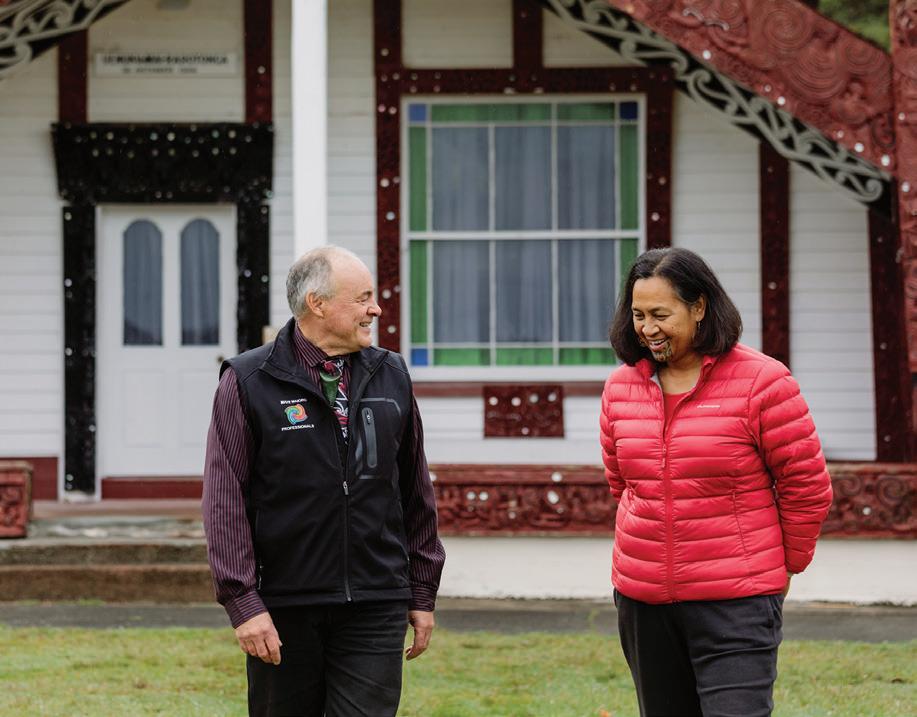
“With the guidance of my ancestors and whānau we designed a sustainable infrastructure system on our Māori land back in the 1980s, long before the well-known versions were even being thought of. The roads, the power, the stormwater solutions were designed based on the first principles of te ao Māori, our way of knowing. When you compare it with low impact development or water sensitive urban design now, 90 percent of the features are evident with what we designed here in 1988.”
He says: “Haumingi papakainga was ahead of its time. It hasn’t been given recognition, but that doesn’t matter, it’s a beautiful place to live.”
Dr Kēpa Morgan with Dr Robyn Manuel.
>>
28 EG 20/2022
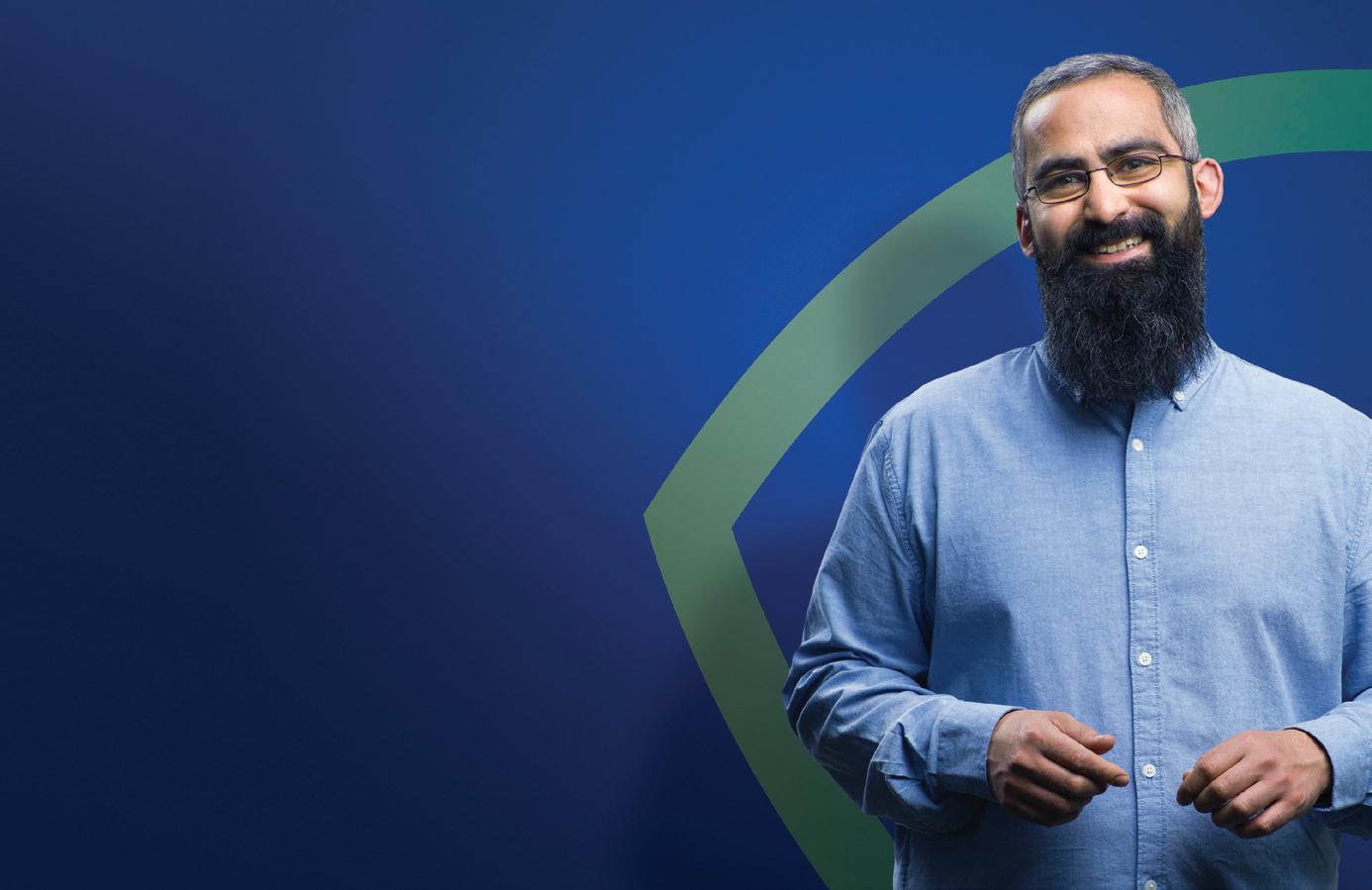
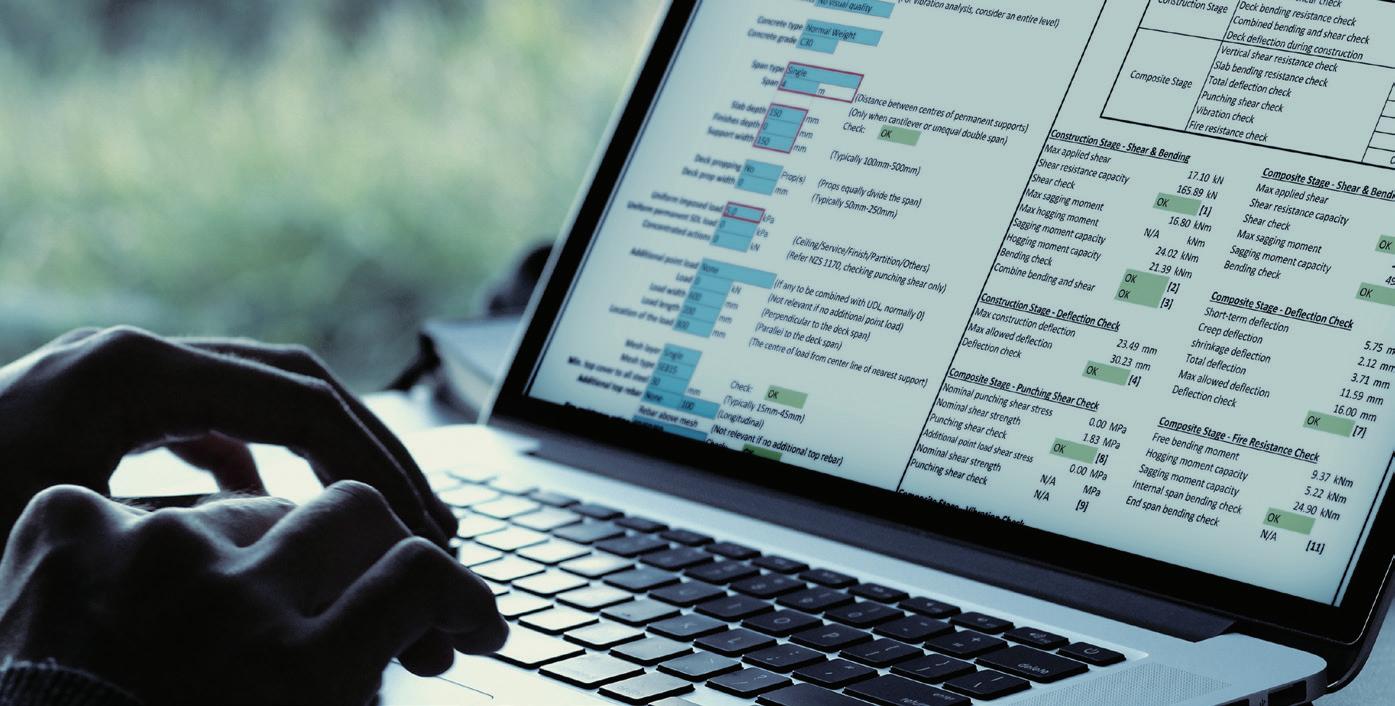
Me tūhono mai koe ki te kaiinihua e mahi nei mō te kaupapa, kaua mō te moni. He inihua oranga, whiwhinga pūtea hoki e whakahihiri nei i ngā hapori kia pai ai te hauora. Tūhono mai i tēnei rā. mas.co.nz THE MOST IMPORTANT TOOL BEFORE BUILDERS PICK UP THEIRS. WWW.TRAYDEC.CO.NZ info@traydec.co.nz09TRAYDEC8209133 NELSON STUD WELDING 09 820 sales@nelsonstud.co.nz9133 Our Excel-based design software helps engineers easily and efficiently specify the right composite steel flooring for each project, ensuring compliance with AS/NZS 2327:2017. Visit our website to request a copy. TRAY-DEC DESIGN SOFTWARE
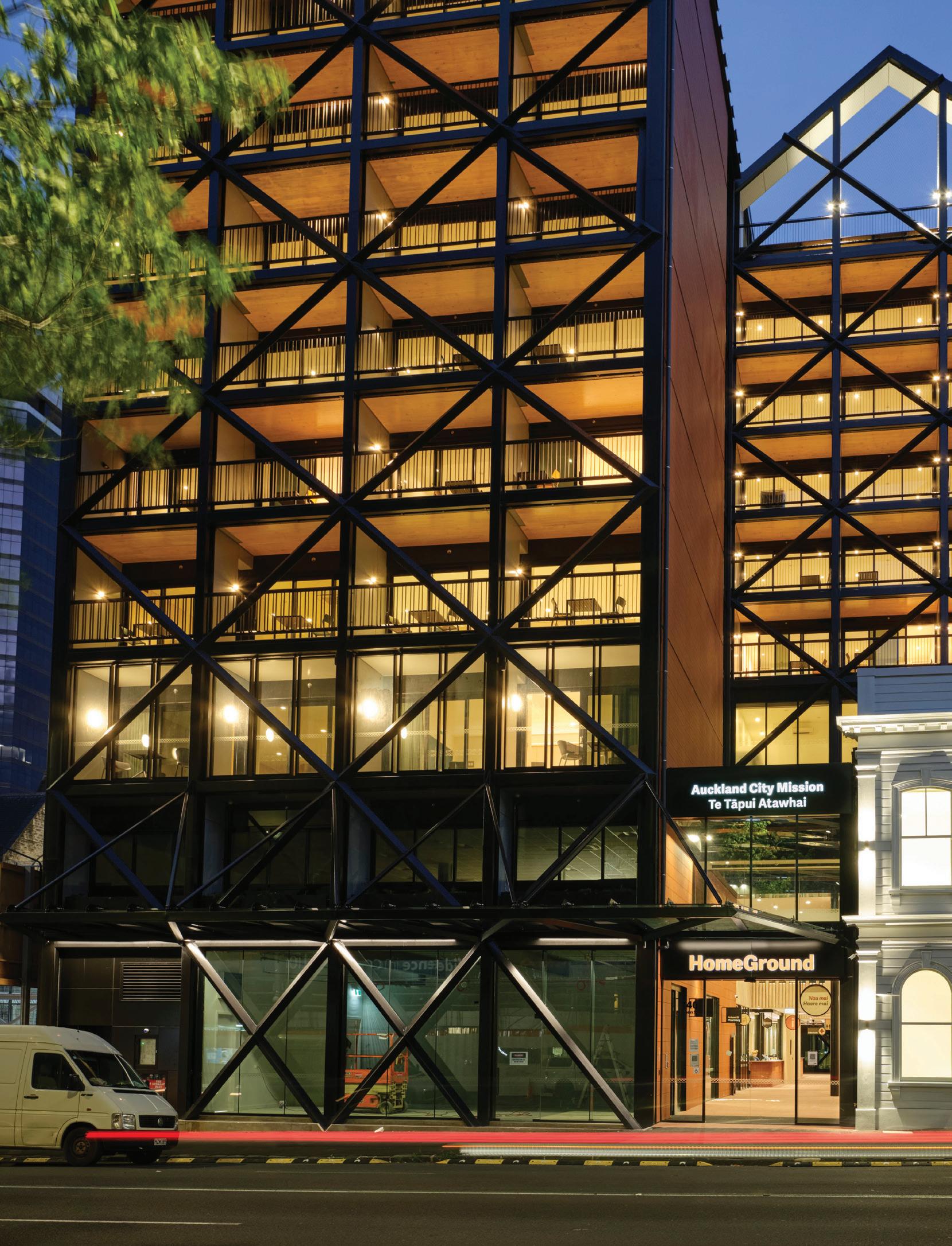
Building “a place of communityengineeringExemplar:andtransformationhealing”supportWRITER|KAITUHI ALEXANDRA JOHNSON HomeGround's main entrance on Auckland's Hobson Street. Image: Mark Smith 30 EG 20/2022
A place to call home Opened February 2022
80 new permanent apartments with 24/7 wraparound support

Health centre for up to 3,000 people, ultimately to include dental, physiotherapy and podiatry services
Haeata, a community dining room that can support up to 300 people a day
Public showers and toilets
Social and medical detox unit with 30 beds Education, art and training facilities
Budgeting advice and other support networks
Rooftop greenhouse and tenants’ lounge
There are few buildings in the world that are an engineering first, architecturally unique, offer high levels of sustainability and are designed specifically to deliver complete services and accommodation to a community’s most vulnerable people. But HomeGround, the new Auckland City Mission – Te Tāpui Atawhai building in Tāmaki Makaurau is just that.
The Auckland City Mission has been caring for community members for more than 100 years, 40 of which have been out of one of Auckland’s oldest pubs, the Prince of Wales Hotel. But the 19th century building has recently undergone a complete transformation and, based on the Common Ground Model employed overseas which provides permanent housing, meals, and 24-hour care, is now a state-of-the-art facility for Auckland’s homeless. In addition to the enormous social value HomeGround offers, the building also illustrates remarkable design, engineering and construction elements, and is the tallest cross-laminated timber (CLT) building in the country. CLT consists of sawn timber boards glued together in 90-degree alternating directions to form jumbo-sized plywood panels.
>> 31
Feature | Āhuatanga
Gary Lawson, who worked on the project with Stevens Lawson Architects, says the building brought unique challenges and opportunities.
“Apart from the extremely demanding nature of the design brief and the special needs of the people the building was to serve, it was essentially the ‘first cab off the rank’, to build a mid-rise building of mass-timber in a seismic zone,” he says.

“Perhaps unlike many overseas examples, even the cores are CLT and so bracing the building was challenging, while allowing for the dimensional movement the building faced through construction and over time.”
He says because the design concept uses structural resolution as the architectural expression, the entire process was highly collaborative.
– Helen Robinson
1. Covered courtyard. Image: Mark Smith

2. HomeGround is the tallest cross-laminated timber building in the country.
Image: Stevens Lawson Architects
3. Rooftop terrace and greenhouse.
Image: Mark Smith
HomeGround has been built by, for, and with Aucklanders at its heart and is primarily a place of transformation and healing.
An “exciting, new and different” project Main construction by Built Environs Construction period: 27 months 12,500 m2 housing and support centre Cost: approximately $110 million Approximately 3,940m in height, 11 levels, includes refurbishment of existing hotel structure, The Prince of GabledWalesroof evoking the image of a home and a Māori wharenui Diagonal bracing evoking Māori weaving patterns found in tukutuku (latticework) and Pacific tapa >> 1 2 32 EG 20/2022
“It was a very productive relationship between architects and engineers and critical that the two disciplines developed the design thinking side-by-side, from the concept right through to the construction phases.”
Gary describes the building as “love in action” and says it’s “… a truly remarkable achievement by many, many passionate people for the benefit of others, rather than themselves.”
Technical Director at AECOM New Zealand Toby Bridge says traditional materials were initially intended for the project prior to AECOM’s involvement.
“When we came on board, the design team wanted to explore the options that would not only provide the best outcomes from the structural engineering perspective, but also the best architectural, sustainable and social outcomes for the project of such a huge social“Withsignificance.ourexperience using the material globally, we had the knowledge and support required to develop a unique CLT hybrid solution.”
He credits CLT with three main advantages.
“Firstly, it is 20–30 percent lighter than steel, so far more efficient” he says.
Secondly, he says because it’s lighter and prefabricated, it is easier to construct and the site is much cleaner.
Auckland City Mission CEO Helen Robinson says the Mission’s previous facility had lots of heart but was not fit for purpose in many ways.
“HomeGround has been built by, for, and with Aucklanders at its heart and is primarily a place of transformation and healing,” she says.
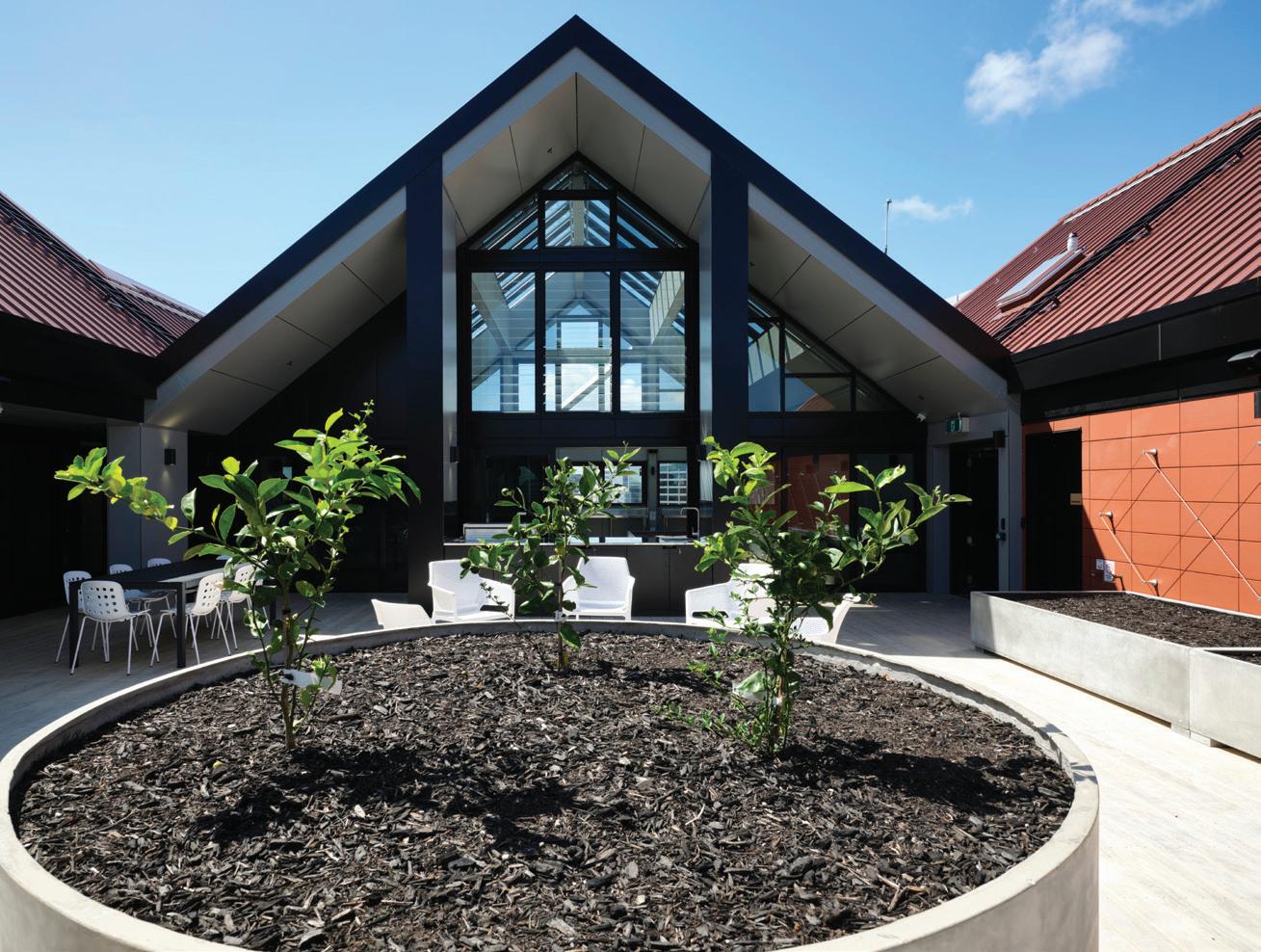
“It makes a strong statement about how our city cares for its most vulnerable people.”
The reaction to HomeGround is tangible, she says.
“Each day I can’t help but come across people in the laneway who are needing our support, and I am struck by how we are now able to do that with the dignity and ease of service that they deserve. People tell me every day about how they love their new apartments, appreciate the warm and welcoming laneway, and enjoy having home-cooked meals in Haeata.
“It is already living up to the promise of being a place of transformation and healing and I am truly grateful to everyone who has played a part in making this long-held dream a reality.”
“All the panels were prefabricated before they came to site which made it much faster and easier for construction in the CBD, not having all that heavy lifting, concreting and welding”.
And finally, because the product has far less embodied carbon compared to the traditional steel and timber construction materials, it is much more sustainable.
CLT also does not need to be insulated, painted or “Itfireproofed.hasaninherent fire resistance, which means it can be designed to accommodate substantial fire and remain structurally stable at the high temperatures.”
In HomeGround, CLT forms the walls, floors and the lift cores throughout the accommodation levels.
“We utilised a hybrid CLT and steel bracing system for the building stability, which provided a unique architectural outcome. The connection of the steel bracing taking the lateral but not gravity loads to the CLT structure is complex allowing for differential axial shortening between the timber and steel.”
Toby says timber makes a building far more welcoming and“Ithomely.wasdesigned with the best outcome and wellbeing of occupants at the front of our minds. And from an engineering perspective, it was exciting, new and different – a great project to be involved in. Good for society, great for the environment. It ticks a lot of boxes.”
3 33Feature | Āhuatanga
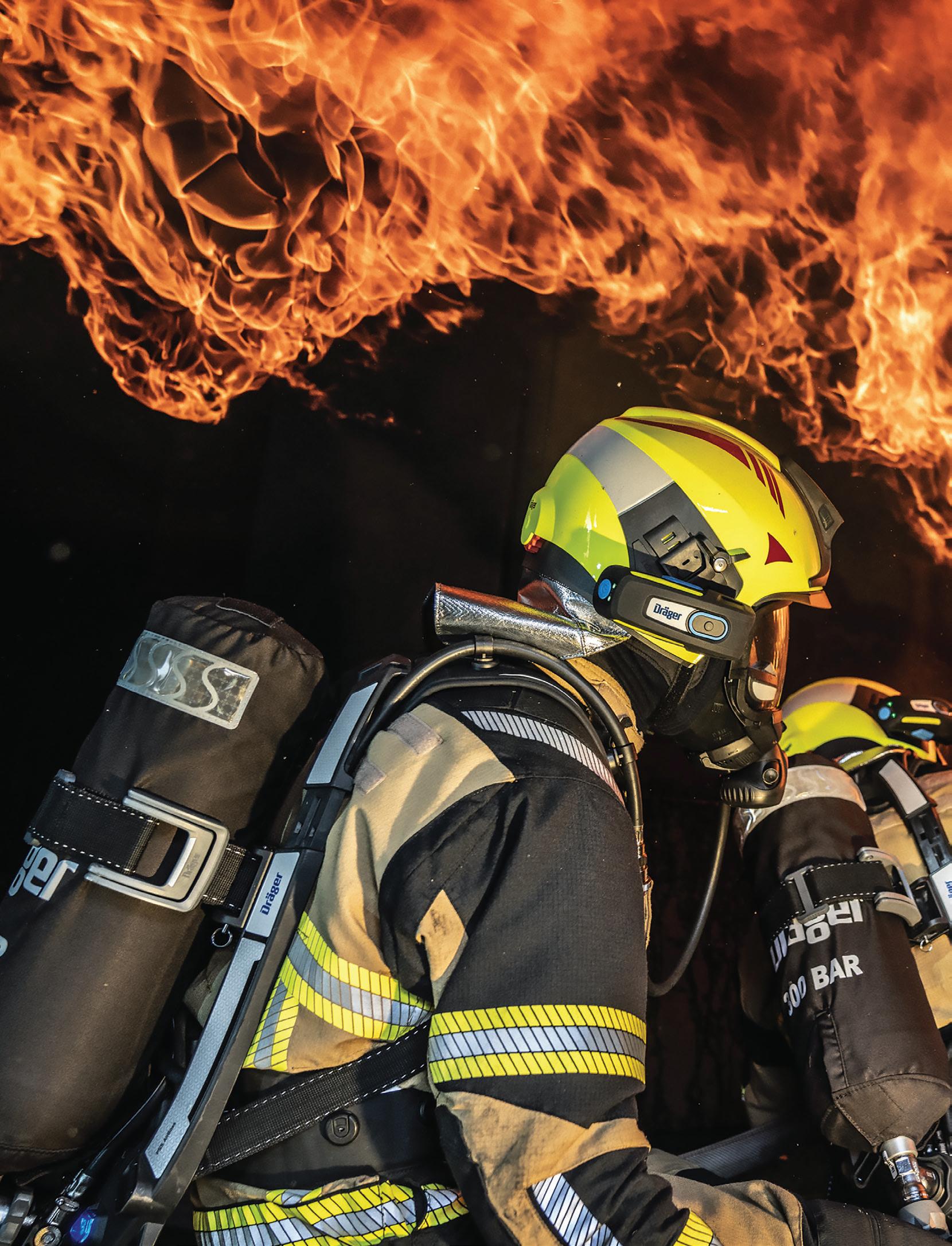

Snapshot innovationssparkingworld,thearoundfirefightersfromlearntlessonsboardontookwinner,AwardDesignIF2022aAirBoss,PSSDrägertheofdevelopmentTheharness.adjustableanandbeltwaistslidingandpivotingaheight-adjustment,includefeaturesKeylonger.forandeasilymorebreathetorespondersemergencyallowthatlivewithcommandersincidentsuppliessystemaccountabilityautomaticanandfeatures,designsafetymajortwoarelightingintegratedandsurfacesreflectiveLargeDrägerImage:incident.everyatforaccountedthey’reensuringwearers,apparatusbreathingself-containedfrominformation






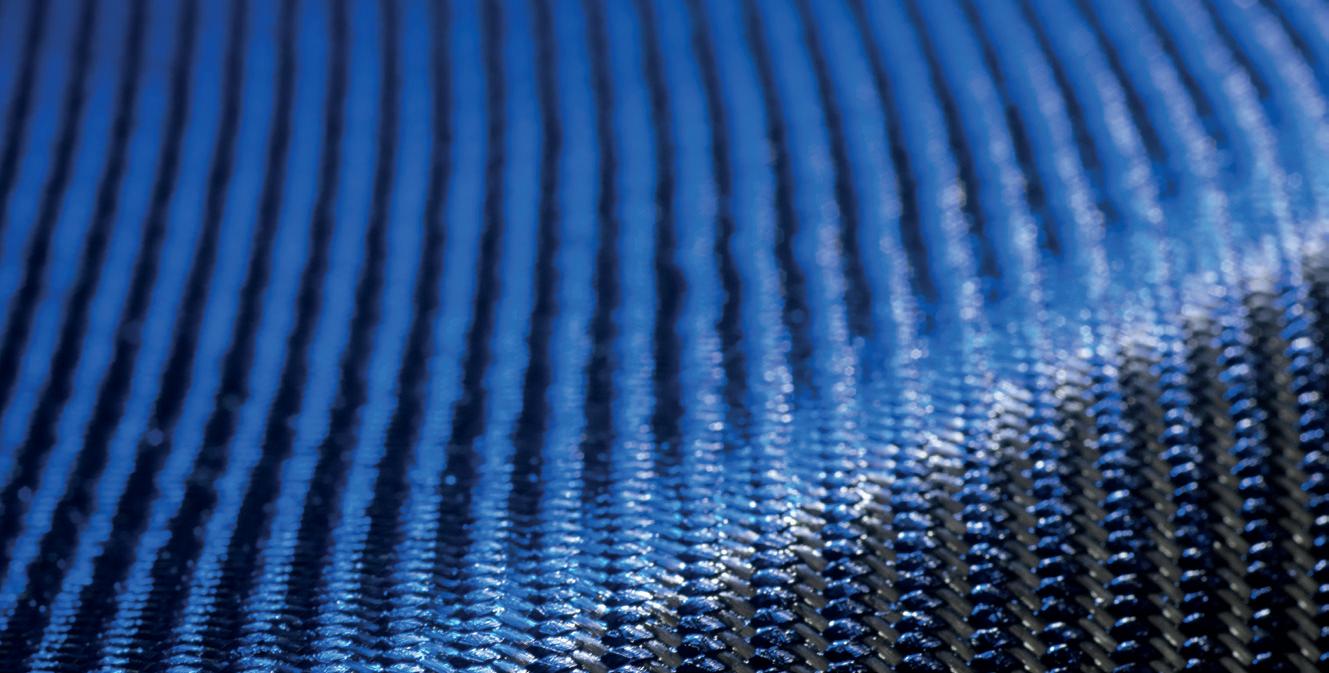
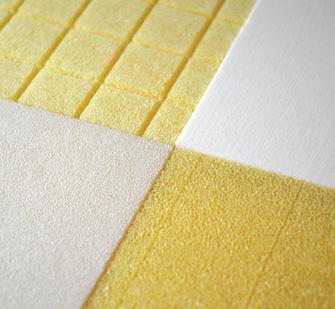

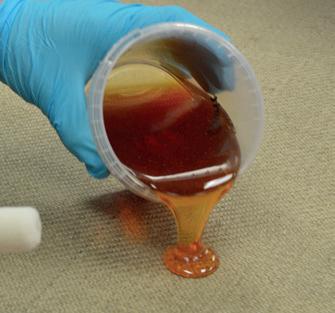

www.gurit.com YOUR SOLUTIONSFULL PARTNER FOR COMPOSITES n Structural core materials n Prepregs and SPRINT™ products n Laminating and infusion resin systems n Carbon, E-glass and fibre reinforcements n Composite engineering, mechanical testing & kit design E info-nz@gurit.com
BestPracticerawaipapaimahiNgā38 Building te ao Māori capability 40 A new dawn? 42 Intersection 43 Imposter syndrome? 44 Fusing two fields 45 Why reflection is critical 46 Measuring our dynamic coastline
Building te ao Māori
howSo,rangeMāoriTherecapabilityisincreasingdemandforteaocapabilityinAotearoaacrossaofsectors,includingengineering.whatisit,whyisitimportantanddoyoufindit?
Te ao Māori (the Māori world) capability includes skill, knowledge and experience in the following key areas: te reo Māori (the Māori language) tikanga Māori (Māori customs and engagingpractices)with Māori communities mātauranga Māori (Māori wisdom, knowledge and understanding)
understanding of Aotearoa’s history and Te Tiriti o Waitangi (the Treaty of ThereWaitangi).arearange
of key drivers fuelling
the increasing interest in te ao Māori capability. These include a vibrant and increasingly diverse Māori economy (worth an estimated $68 billion dollars in 2018) and a growing Māori population.
There is also recognition that mātauranga Māori can provide unique and innovative ways of thinking and doing things and that te ao Māori values are highly progressive (for example deep commitment to the taiao (environment), an inter-generational and collective vs individualistic focus).
In addition, many organisations have recognised the need to engage authentically with Māori communities and stakeholders and have an increasing interest in organisational diversity and inclusion practices. There is also a
growing commitment to honouring Te Tiriti o Waitangi and addressing historical inequity, plus a renaissance and rediscovering of identity by people with Māori whakapapa (genealogy/lineage/ descent). It’s also worth pointing out that there are many non-Māori who have, or are developing, this capability.
Attracting staff with te ao Māori capability Like all talent shortages, there’s no silver bullet and success will come from a range of activities working together over a period of time. Employers need to look at how they attract candidates with te ao Māori capability. It is important to lead with purpose in any recruitment or publicfacing material. Why an organisation exists, its purpose and values and what it is doing to improve outcomes for people, the environment and for Māori specifically are of key interest to job seekers and Māori job seekers in particular. Be sure to profile Māori leaders and kaimahi on publicfacing material. Also, where appropriate, make use of te reo Māori in advertising and attraction materials.
Articulate and be explicit about what your organisation offers to employees (the employee value proposition). Tap into the
networks of your existing kaimahi Māori (Māori employees) and/or advocates and reward referees. Employ strategic recruitment methods such as proactive recruitment and direct outreach to target individuals and talent pooling, welcoming interest from people even if you don’t have a vacancy available immediately. In addition, make use of Māori-focused job websites and recruitment agencies.
Recruitment tips
Carefully consider the job requirements –are they all needed? Are there any which could be developed over time with the support of the employer? Try to be openminded and consider the transferrable skills and experiences (including voluntary work) that candidates come with. Enable candidates to have direct contact with the hiring manager and other kaimahi Māori as part of their candidate journey.
In the job interview, make use of tikanga Māori protocols, such as karakia and pepeha. Focus on making this a two-way kōrero and getting to know the whole person so the conversation is not solely focused on technical skills. If possible, ensure there is Māori representation on interview panels and non-Māori who
TĀNE O’RORKE
There is also recognition that mātauranga Māori can provide unique and innovative ways of thinking and doing things.
38 EG 20/2022
can conduct themselves with cultural competence. When the selection process is over, do recognise and reward te ao Māori capability appropriately and ensure it is a factor in remuneration decisions. However, you can save yourself a recruitment challenge by focusing on retaining the Māori talent you already have.

Supporting the talent pipeline
For industries requiring specialised training, such as engineering, we need to consider the pipeline of talent coming through the system. There are a range of ways we can make the engineering profession of interest to rangatahi (young people) and support them while they are studying. For example, by investing in scholarships and early in career initiatives – work placements, internships and graduate programmes. Also, by developing an industry-wide, long-term workforce strategy and support with investment (initiatives like the Diversity Agenda). Also, focus on the diversity and cultural competence of leaders, managers and all employees and establish positive relationships with iwi and mana whenua and provide employment opportunities for their people.
Tihei Mauri Ora!
Tāne O’Rorke (Ngāi Tahu, Kāti Māmoe) is Co-Founder/ Director of ahujobs.maori.nz and andtheprovidingwhakahui.co.nz,servicesinMāorirecruitmenttalentspace.
39Best practice | Ngā mahi papai rawai
A new dawn?
CINDY JEMMETT
Every year, 15–30 times more solar energy shines on New Zealand rooftops than each home uses in electricity and gas. But how best to harness and store it? This is an engineering question but also a political one. Solar technology is centuries old, but the motivation to develop and incorporate it into our lives is socially, economically and politically driven.
Photovoltaic cells have their origin in 1839 when French physicist Edmond Becquerel observed that some materials created an electrical charge when exposed to light. In the 1880s, American inventor Charles Fritts created the first commercial solar panels. These early solar cells were very inefficient and could not compete with coal and other fossil fuels which were cheap and readily available.
In 20th century New Zealand, interest and enthusiasm for solar energy has surged and waned in response to the cost and dependability of our national electricity supply.
From the mid-1960s, articles began appearing in Engineering New Zealand’s then-journal, New Zealand Engineering, discussing the potential of harnessing solar energy. Our demand for energy is increasing and fossil fuels are finite, the articles warned. Solar water heating and space heating were identified as the two most cost-effective and easily implemented solar solutions.
Experimental solar water heaters were installed in two state rental houses in Auckland and one in Porirua East in
1959. The units halved the water heating costs at these properties, but despite this success, uptake remained slow. “Solar houses” (today known as passive solar design) were also a source of curious interest in New Zealand from the 1960s. This went hand in hand with calls for wider recognition of the benefits of insulation.
It was not until the oil shocks of the 1970s that solar water and space heating gathered further interest and uptake. In 1981, Graham Stevens, environmental design lecturer at the University of Auckland’s School of Architecture, wrote hopefully that the principles of passive solar architecture could be applied to any new building in New Zealand at little or no extra cost and that many older buildings could be retrofitted. Photovoltaic cells also got a boost in the 1970s. Investment in their development saw cells become more efficient and cheaper to produce. By 1975, silicon cells were achieving an efficiency rate of 12–14 percent. As oil prices stabilised, uptake of solar energy waned. By 1984, Graham’s optimism about the uptake of solar house design had faded and he felt that “95 percent of people just don’t give a damn at present”.
Reflecting on the energy upheaval of the 1970s, the authors of a 1988 paper given at a New Zealand climate change seminar asked: What are our responsibilities, as citizens, scientists and engineers? They argued that energy efficiency and solar options would not be widely introduced if left to market forces because the dollar price paid for fossil fuels did not reflect
the environmental cost. Nor would any technical solution serve us for long if we continued to use and produce more and more.
A decade later, not much had changed. Solar energy was still alternative rather than mainstream and as a 1999 article commented, New Zealand’s gas burning power stations were providing relatively cheap power, their carbon dioxide emissions not costing anything to the station owner or power consumer. In the late 1990s, approximately 800–1,000 solar water heating units were installed each year, about 1.5 percent of the total annual hot water system sales. Photovoltaic cells were economic in remote locations, but in cities many homeowners still considered the set-ups costs to be too high.
Solar water heating, passive design and solar panels are today still largely alternative technologies and not something the average homeowner would consider as a matter of course.
History shows us that innovation and implementation come at times of pressure when to continue with the status quo is more painful than making changes. As creative thinkers, engineers have a role and a responsibility to not only design technical solutions but to reimagine how we live, to help us build a closer relationship with our environment and to realise a future where we consume less.
Cindy Jemmett is Heritage Advisor at Te Ao Rangahau.
40 EG 20/2022
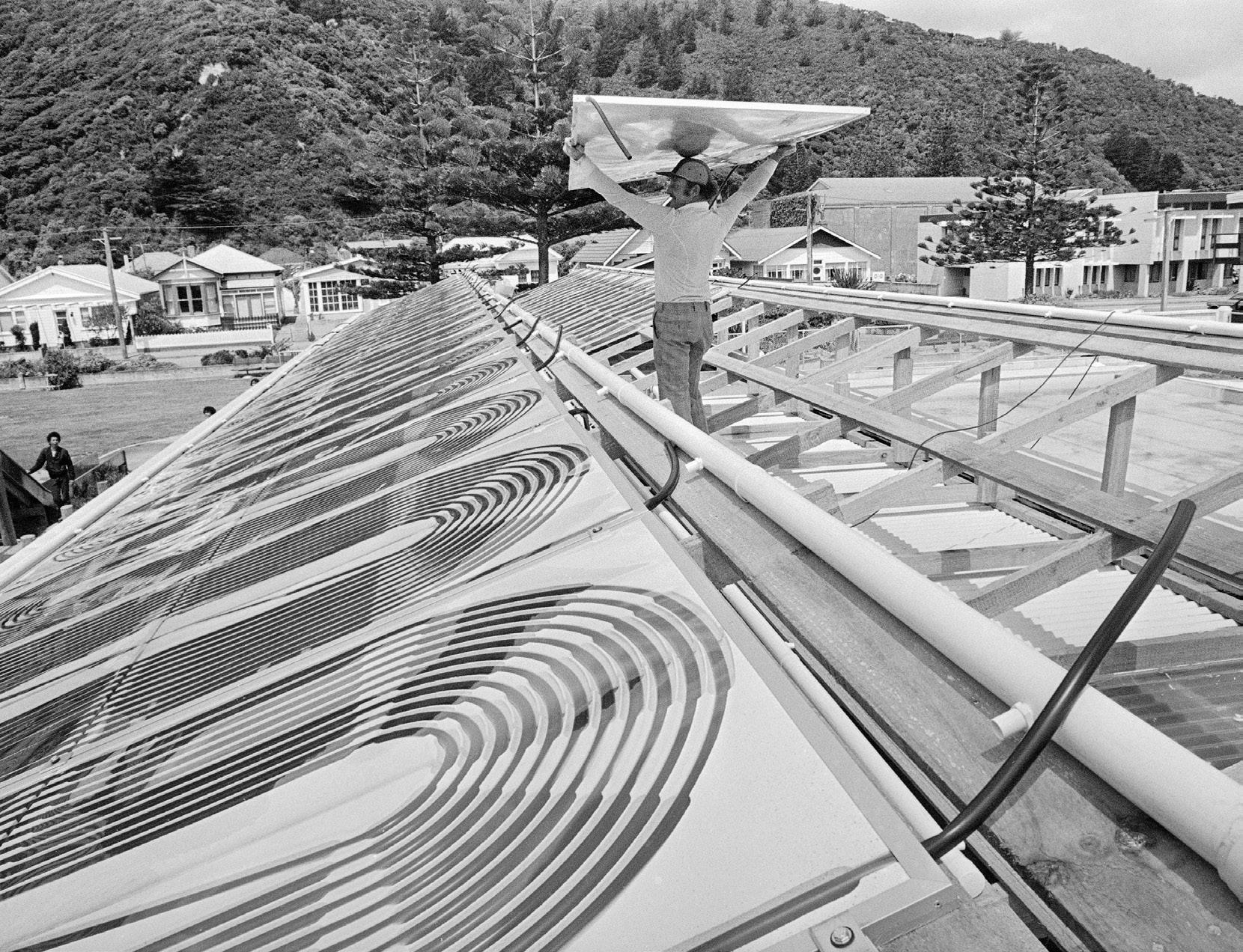 Solar heating panels, and installer Colin Doughty, on the roof of the Eastbourne swimming pool, Lower Hutt. Photograph taken circa November 1981 by Merv Griffiths. Alexander Turnbull Library, Wellington, Ref: EP/1981/3783/8-F.
Solar heating panels, and installer Colin Doughty, on the roof of the Eastbourne swimming pool, Lower Hutt. Photograph taken circa November 1981 by Merv Griffiths. Alexander Turnbull Library, Wellington, Ref: EP/1981/3783/8-F.
1980s
41Best practice | Ngā mahi papai rawai
Crossing paths with engineers.
After finishing university, Darren Wright MNZM worked as a commodities trader for Hess Corporation in London and Rurhgas in Essen, Germany before returning to New Zealand in 2002 with his young family. Following the 2010 Canterbury earthquakes, Darren has focused his attention on earthquake recovery as an independent advocate for insurance claims and then for the Ministry of Business, Innovation and Employment’s (MBIE) Residential Advisory Service. In 2018, he helped MBIE establish the Greater Christchurch Claims Resolution Service (GCCRS) to support homeowners with their insurance and Earthquake Commission (EQC) claims and is currently its Director. In 2016, he was made a Member of the New Zealand Order of Merit for his services to the community and earthquake recovery.
How do you work with engineers?
The GCCRS works closely with engineers. It has supported nearly 4,000 homeowners with their claims, all of which involve engineering of some level. In conjunction with Te Ao Rangahau, we established a panel of engineers to support homeowners in their EQC/ insurance claims. This ranges from high-level Initial assessments through to peer reviews and full reports. We also established a facilitation model where panel engineers facilitate technical disputes between engineers engaged by homeowners and EQC/insurers. More recently, we set up a reinstatement recommendation protocol where an
engineer from the panel is engaged to work with both parties that have agreed to be bound by the outcome.
How does your work impact on engineers?
One of the most challenging aspects of the Canterbury Earthquake Sequence (CES) has been the time it has taken to resolve claims and the often complex technical and personal aspects of the claim. Engineers are often required to manage expectations of both homeowners and EQC/insurers in highly charged, complex situations. We often see engineers’ reports for properties coming to very different conclusions, both as to the damage sustained and the repair required.
How do engineering decisions impact on your work?
Over the past 12 years, engineering has often been the most challenging aspect of the CES. An engineer’s report can be the difference between an epoxy repair to a foundation or a total rebuild of a house. Engineering decisions impact not only on my work, but also on the lives and wellbeing of homeowners on a daily basis.
GCCRS has worked alongside engineers and Te Ao Rangahau to make real changes to people’s lives as we have helped them navigate and conclude the complex world of EQC and insurance.
What are some observations you’d make after working with engineers?
I have had the privilege of working with many very talented engineers both in
Darren Wright MNZM
Based in: Christchurch
Role: Director Greater Christchurch Claims Resolution Service (GCCRS)

Education: Bachelor of Arts, University of Otago, 1991; Master of Science (Hons), University of Canterbury, 1993
the insurance and the commercial property space. While technical skills are important, it is the personal and human touch that resolves disputes. Also, they focus on the evidence in front of them. When starting this role, I thought engineering was a science. I now think engineering is also a dark art with many variables and often many unknowns that require constant problem solving.
What do you wish all engineers understood about your role?
I would love to see all engineers working in the insurance space take the lead supporting their clients to understand the importance of correct engagement.
Te Ao Rangahau has a best practice guideline on how to engage an engineer. All engineers should use this when being engaged by homeowners and EQC/ insurers. Plus we all need to remember the importance of forensic explanations for lay people. Reports that detail the “why” go a long way to helping people understand their situation, and, subsequently, the journey they need to go on to resolve their problems.
42 EG 20/2022
saytoBesyndrome?Impostersuretodoallthenecessarychecksensureajobcandidateiswhotheytheyare.
In May, Engineering New Zealand published a disciplinary decision about Prajna Singh. Ms Singh was disciplined for holding herself out for several years as having an engineering degree (when she didn’t) and being a Chartered Professional Engineer (when she wasn’t).
By the time Ms Singh’s deception was uncovered, she had held several senior roles within the industry. With such a tight job market, it is more important than ever that consultancies ensure they are getting quality candidates. There are checks you can and should do to ensure the candidate is who they say they are. Check credentials. If you’re using a recruiter, ask them about their credential checking processes. Do they validate the candidate’s degree and carry out reference checks? If you’re unsure, or if you’re doing the recruitment yourself, do your own due diligence. Ask your candidate for a copy of their qualification (and if they’re a new graduate, their transcript). Candidates from Australia and New Zealand should be able to provide you with verified qualifications through My eQuals. Most New Zealand universities have a searchable database of graduates for at least the past 20 years. You can ask international candidates to have their credentials checked through Te Ao Rangahau.
You can also speak to us about other ways to verify international qualifications. Check references thoroughly. Don’t assume a written reference is legitimate – make contact with the referee to ask questions. If your candidate hasn’t provided a reference from their last employer, ask if you can contact them. If the answer is no, it would be wise to dig deeper. If you’re interested in a candidate because they’ve told you they worked on a particular project, don’t take their word for it: find out for yourself.
Test your candidate’s knowledge. Ask them to go back to first principles and solve a problem. You can either prepare a test yourself or find a resource online.
For recent graduates, you could ask them to convert a simple problem into a free body diagram in front of you. For more experienced engineers, you could give them a project of the type they would be working on that contains errors. Ask them to find the errors and correct them using first principles and rules of thumb, no calculators or computers allowed. You could then ask them how they would resolve the issue if the project had already been completed.
In July, Te Ao Rangahau initiated a project to share problems found in disciplinary decisions as a learning tool for engineers to use. They encourage engineers to think through problems and may provide examples for you to use.
Ask your candidate if they’ve ever dealt with a complaint (either formal or informal)
and how they worked to resolve it. Any engineer can be the subject of complaint; it doesn’t automatically mean they’ve done something wrong. Complaints can be a valuable learning experience and hearing how someone responds to their own mistakes can give you valuable insights into their character.
We can’t disclose information about complaints unless they are upheld and name suppression is lifted. The only exception to this is where we consider a member may pose a risk of harm to the public. We can then disclose relevant information to their current employer and relevant agencies. Formal complaints that have been upheld by Te Ao Rangahau can be found on our website.
Most people are honest about their qualifications and work experience. Unfortunately, the financial, legal and reputational damage you may suffer as the result of employing the wrong person is too serious to be able to simply take people at their word.
Christine (pictured)AndersonisLegal Manager at Te Ao Rangahau.
 CHRISTINE ANDERSON
CHRISTINE ANDERSON
43Best practice | Ngā mahi papai rawai
Fusing two fields
It’s increasingly uncommon to see products and projects that have mechanical aspects but don't also have electrical aspects.
Electrical and mechanical engineering (we'll call it mech/elec here) share common project types, for example product and machine design, where they need to work together harmoniously. Electrical components motivate and monitor mechanical components, and mechanical components house the electrical components and provide the motion responses that the system requires. Specific mech/elec examples include food processing machines and additive manufacturing. It’s no longer surprising that 3D printers can create edible outputs. In such applications, mechanical engineers take input requirements like ingredients, process details and output requirements, and design mechanisms that satisfy the requirements. In tandem, electrical engineers use those requirements and the preliminary mechanical design to determine the sensors and actuators required to drive and control the mechanisms. That work feeds back into the mechanical design in an iterative manner. This interdependence has led to the emergence of the mechatronics field which recognises it is beneficial for an engineer to be able to consider the electrical aspects when designing the mechanical aspects and vice versa; or to be able to design both systems in tandem.
Looking back to where Aotearoa's electricity supply began, it’s clear that on a global scale, we were an early adopter of electricity generation and distribution and also of green energy, in the form of hydropower. Even the first power stations
were projects requiring mech/elec as well as civil and structural engineering input. As we move towards the greening of our economy and increased adoption of electrified transport, the ongoing need for mech/elec collaboration is clear and sparks the need for “transition engineers”. Often from mech/elec backgrounds, they can address the need to reduce fossil fuel consumption to meet climate change emission targets. This often involves engines giving way to electric motorpowered transportation using renewable energy, and heavily relies on advances in electrical engineering over the past century which have provided for power, torque and vehicle range requirements. Electric vehicles still require a substantial mechanical engineering input into systems such as the chassis and body, suspension and braking systems.
Our existing infrastructure networks including rail, road and aviation were largely built by former government agencies who planned, built and governed the infrastructure and trained people for these industries, such as the New Zealand Electricity Department, New Zealand Railways, New Zealand Post Office and regional electricity authorities.
From the post-war period until the complete deregulation of imported goods in the 1990s, there was a great deal of electrical and mechanical engineering activity in Aotearoa within research and development, product design, manufacturing and construction of critical national infrastructure. Government departments and many manufacturing companies offered graduate development programmes, with graduates moving between departments to gain experience in all aspects of the engineering and
management required to ensure the host organisation was able to thrive and maintain a healthy cohort of engineers and managers for succession planning. With the dissolution of the large government agencies and the departure of most domestic manufacturing activity, training and career pathways for electrical and mechanical engineering students are much less clear. Much mech/elec industry work is now undertaken by small and medium-sized enterprises who are competing in a global market and often lack the scale to resource a graduate development programme. Coupled with an ageing workforce, recent difficulties importing skilled workers and now an increasing brain drain, there's an alarming, looming hollowing-out of the workforce. It is essential we create a pathway for electrical and mechanical engineering graduates to enter the workforce and develop the skills and experience to become the experienced engineers our contemporary industry needs to survive and thrive. As industry professionals, we can help by encouraging employers and prospective students to find out more about engaging with vocational engineering
September'seducation.inaugural EMCONZ
2022 conference sees the Electrical Engineering Group and Mechanical Engineering Group partnering with AUT School for Future Environments to showcase these two disciplines. Find out more at engineeringnz.org
Adrian Ferguson MEngNZ is BEngTech Apprentice & Hub Coordinator at Otago Polytechnic. Simon Hall FEngNZ is Operations Manager at Caliber Design and Chair of the Mechanical Engineering Group.
ADRIAN FERGUSON MEngNZ and SIMON HALL FEngNZ
44 EG 20/2022
Why reflection is critical
Critical reflection is a technique used to actively reflect on your past actions, behaviours or experiences, in order to plan and improve your competencies and performance. But how should you approach it, what’s involved, and how might it help you in your work?
Also known as action learning and continual improvement, the aim of critical reflection is to continuously improve performance and outcomes. It’s used in systems like Six Sigma – a set of techniques and tools for process improvement introduced by an American engineer at Motorola in the 1980s – and it’s characterised by an ongoing cycle of three steps: plan, act/do and reflect.
Step 1: Plan
Decide on the areas you’re going to develop or improve and how you will do so. Identify the competency you’ll focus on – this is often aligned to your career, role, firm or trends. Write a specific goal based on this competency then break it into small, achievable steps. Ask yourself how you’ll know when you’ve achieved the goal – what does success look like? Identify the support and resources that will help you achieve your goal.
Step 2: Act/Do
Consider what you’ll do to practise and develop that ability or skills. Do what you said you would do. Use the resources around you to learn and get feedback, and take opportunities to observe and learn from others. And remember, most learning occurs from on-the-job experience.
Step 3: Reflect
Examine how things went – what went well, what didn’t and what are you going to keep working on? Seek feedback from a wide range of sources. Critical reflection recognises that much of your learning and development happens on the job, supported by those you work with.
Why is reflectioncriticalimportant?
It enables you to build competencies and capabilities (skills, knowledge and attributes) through a deliberate and structured approach. It benefits everyone you work with – organisations, teams, individuals – and benefits projects, improving performance and outcomes. Furthermore, applying critical reflection and documenting progress can contribute to continuing professional development (CPD). However, you need to understand the bounds of your competence and where you want to grow your knowledge to improve. (See engineeringnz.org for more on this.)
Working with mentors and coaches
Critical reflection works best when you drive your development and growth.
It also recognises the role of coaches and mentors to help you upskill and embed new knowledge and skills on the job.
Your role
Keep a record of your competence, areas to develop and your CPD. If you're a member of Te Ao Rangahau you can log your CPD hours and work records in the online member area.
Identify the overall competencies you want to work on (and break these into smaller, achievable, measurable steps).
Communicate with those who are supporting you (for example with supervision, coaching and specialist Documentknowledge).coursesyou attend and engage with, showing how you have been an active participant and are making changes to enhance your performance. This includes providing examples of where you have used the information gained in your day-to-day work, or a specific project. Record actions you have taken from conversations and feedback from others.
Tips for mentors and coaches
Ensure you understand their focus for competency development. Offer suggestions on courses, readings and research, practical activities and specialists to engage with.
Suggest practice activities, for example, specific project work under the supervision of an expert. Provide feedback and coaching
Supportopportunities.them to develop their knowledge in measuring progress in their development.
Be positive – encourage effort and grit and recognise achievement. Remember, it’s not the role of the mentor to be the expert.
Find out more about critical reflection, including how to apply the critical reflection cycle, and a handy template, at engineeringnz.org
Martin Pratchett MEngNZ is Engineering Practice Manager at Te Ao Rangahau.
MARTIN PRATCHETT MEngNZ
45Best practice | Ngā mahi papai rawai
Measuring our dynamic coastline
New projections for sea level rise and the impact of vertical land movement will help guide planning for adaptation along our coastline.
New Zealand’s coastline is highly dynamic, with much of it slowly moving up or down in between large seismic events that occasionally drive large instantaneous jumps in land elevation. Slow, interseismic movements can either accelerate sea level rise in regions that are sinking, or slow it down in areas that are rising. Land subsidence can also occur due to ground water extraction and sediment compaction in regions that have been drained or reclaimed.
Until now, the influence of vertical land movement on local sea level rise along large parts of our coastline has been hard to estimate due to a lack of data. Planners have had to rely on the Ministry for the Environment’s (MfE) coastal hazards guidance for local government that used one set of sea level projections for the whole of Aotearoa. NZ SeaRise’s online map (searise.nz/maps-2) shows users location-specific sea level rise projections for every 2km of the coast.
While future impacts and implications of climate change are uncertain, they’re not entirely unknowable. We know that tens of centimetres of sea level rise over the next several decades is unavoidable and that the sea level will continue to rise for centuries. However, just how quickly the sea level rises and the maximum height
it finally reaches are uncertain and are highly dependent on the carbon emissions pathway humanity follows. To help us explore and understand our possible climate futures, scientists, planners, and policy makers use different possible scenarios to help planners, engineers, and policy makers anticipate and plan for plausible futures.
The Intergovernmental Panel on Climate Change’s (IPCC) latest assessment reports implemented a new core set of scenarios, based on Shared Socio-economic Pathways. These offer a broader view of possible future changes by considering possible responses to a changing climate in the way we live, move about and do business.
Using the same statistical modelling process as the IPCC report, the NZ SeaRise Project team generated sea-level rise projections specific to New Zealand. These include global and regional climatic processes and, for the first time, estimates for local vertical land movement.
Around the country, the vertical rates of movement (excluding earthquakes) vary widely from rapid subsidence in southern Wairarapa to significant uplift near Pikowai in central Bay of Plenty. However, many coastal locations have rates below 1mm per year.
Local areas that experience subsidence of 2mm per year or more have less time than those that are stable until any critical sea level rise threshold is reached. Towards the end of this century, these
moderately high subsidence rates can bring forward the time at which these thresholds are reached by a few decades.
These new projections are designed to guide planning for adaptation at the coast. However, given the uncertainty of ongoing sea level rise, a “predict-thenact” approach to adaptation planning, using worst- or best-case scenarios isn’t recommended. Instead, a dynamic adaptive approach including sequenced or adaptive infrastructure that avoids lockin or path-dependency is best practice. This should be linked with ongoing monitoring of changes in sea level and vertical land movement to inform the appropriateness of a given adaptation solution and when to change to the next planned option. The projections are being incorporated into the next MfE guidance for local government practitioners on coastal hazards and climate change. An interim update on how to use the new sea level projections within the context of the existing guidance is available from bit.ly/sea-level-rise-projections
NZ SeaRise is a five-year research programme funded by the Ministry of Business, Innovation and Employment’s Endeavour Fund. This article was written by NZ SeaRise Project members Professor Tim Naish, Dr Richard Levy, Dr Rob Bell FEngNZ and Ceridwyn Roberts.
46 EG 20/2022
Newlands BayWainuiomata mm/year mm/year mm/year mm/year ~0 mm/year -3 mm/year -5 mm/year -7 mm/year -9 mm/year
Case Study: Eastbourne
With a population of around 2,800, people in Eastbourne, Lower Hutt, live within pockets of flat land next to steep hills in small bays. Eastbourne and Bays are commuter suburbs. Access is by a single winding road directly behind the foreshore, or by ferry. The coastal road is mostly less than 1m above the high tide mark and the residential land only slightly higher. It’s completely exposed to the impact of sea level rise. While 20 years ago, the coastal road experienced one or two events causing temporary closure each year, now there are five or six and the closures last longer and cost more to repair. During stormy weather in July, a stretch of road was closed due to waves crashing over it. The suburb’s water supply and wastewater system pipes run partly under the road. Much of the coastal region is subsiding at rates exceeding 2mm a year, meaning the increase in road inundation frequency will increase within the coming decades, sooner than previously thought, regardless of our global emissions pathway.
This map from the NZ SeaRise Project shows the vertical land movement projected for Eastbourne and Bays.
Image
WELLINGTONBrooklynBroadmeadowsJohnsonville
Petone Lowry
Mahina Bay Days Bay WainuiomataEastbourneCoastHataitai HarbourWellington The Interislander Fry Bluebridge Fry LyallBay FitzroyBay BerhamporeNewtown IslandBay StrathmorePark WellingtonPetoneFry Queens Days Bay Fry Wellington Days Bay Fry yrFQueensSeatoun SeatounDaysBayFry Vertical Land Movement +9
+7
+5
+3
adapted from searise.takiwa.co/map 47Best practice | Ngā mahi papai rawai




THE ART OF SOUND Specialists in theatre audio visual systems with over 50 years experience P: 09 373 2416 E: info@bartonsound.co.nz 01.09 –envis.nz30.11.2022 OPEN.ENTRIES2023
50 The secret life of engineers 53 Leading questions 54 Inside job 56 Bedside table 57 Review 58 Obituaries 60 Engineering genius mepototūhingaNgākōreropitongā Shorts
The secret life of engineers
Julian Hampton of of
 Image: Finlay Woods
Image: Finlay Woods
Role: Civil Engineer at Beca Based in: Queenstown Education: Bachelor
Engineering (Hons) Civil & Natural Resource Engineering, University
Canterbury, 2018
50 EG 20/2022
After finishing his studies – which included a semester abroad at Canada’s University of British Columbia – Julian Hampton secured a summer internship at Beca. This led to a graduate position the following year, working in the Christchurch infrastructure team. He then relocated to Queenstown, where he’s been working on the Lakeview/Taumata residential and retail development through the final design and construction stages. He’s a member of Te Ao Rangahau’s Queenstown Branch. Outside of work, you’re likely to find this avid skier on a mountain, somewhere in the
Whenworld.didyou
first get involved with skiing?
I learned to ski on the eclectic Canterbury club fields at the age of four. I was the youngest of three boys, so I just did what I had to in order to keep up.
When did you start competing?
I started competing when I was in high school. There were no junior events back then, so we had to compete against the adults. I crashed and burned at almost every event but put it all down to character building.
What’s your favourite ski field?
Mt Olympus and Temple Basin are not only my favourite places to ski in New Zealand, but in the whole world. They’re unique and are run solely for the purpose of having a good time. Because they’re run by clubs, nobody is trying to fill their pockets, which means that any money made is used to improve the mountain.
Where has skiing taken you?
My skiing has taken me to all sorts of interesting places around the world,
but I think skiing in Slovakia was up there. Funny thing was, I ran into another Kiwi there who I had never met before and it turned out he was also an engineer working for Beca.
You’re recently back from Europe where you competed in the Freeride World Tour skiing series, what does a competition involve?
To put it simply, you’re given a start point and a finish point on a mountain face. You can ski wherever you choose and all you have to do is impress the judges on the way down by showing off speed, jumps and tricks.
What’s the selection process?
It’s a pretty long process to secure a spot on the Freeride World Tour. You need to start in smaller local competitions to get points and work your way up the ladder.
If you keep doing well, you’ll eventually reach the Freeride World Qualifier finals, where they take the top three riders from Europe/Oceania and the top three from North/South America.
Where were the events held and how did you go?
The five stops this season were Spain, Andorra, Canada, Austria and Switzerland.
I made the finals and secured my spot for next year, but unfortunately had to pull out of the final event due to a knee injury. I finished the circuit in 11th place, with my best result a 6th in Andorra.
Why did you choose engineering as a career?
Experiencing the Christchurch earthquakes meant I was surrounded by all sorts of engineering problems throughout my high school years. I think
it was ultimately my curiosity into how you could possibly repair an entire city that led me into my engineering career.
Does being an engineer bring any advantages to the way you approach skiing and/or competing?
Engineers are typically pretty logical people. Breaking down problems and trying to construct a skiing run pieceby-piece is something that I’m sure has been adopted from my engineering brain.
How do you juggle your skiing training and competitions with work?
It can be tough at times, but I’ve found that people have a lot of interest in this sport and are happy to support me to juggle this with my career. Being based in Queenstown, I have been spotted up the mountain some mornings and am grateful to work for a company that allows this.
Tell us something about your involvement with skiing that might surprise people. It turns out that British adventurer Bear Grylls is a big fan of the Freeride World Tour. Some friends and I have ended up skiing with him a lot while overseas and even provided some coaching for his kids who are just starting to compete.
What’s next for you?
I’m planning on heading back to Europe in January 2023 for another season on the Freeride World Tour. Until then, I’ll be working for the Kā Huanui a Tāhuna alliance to help upgrade Queenstown’s transport and infrastructure networks.
51Shorts | Ngā tūhinga poto me ngā pito kōrero
Join the insurer that’s driven by notpurpose,byprofit. that’s

Global Engineering Opportunities with Robert Bird Group

Robert Bird Group is a global consulting engineering firm committed to delivering each client’s vision through the relentless pursuit of engineering excellence, across all projects. We transform inspiring concepts into buildable designs through innovative, collaborative, and proactive solutions. currently have numerous opportunities available in New Zealand (Auckland/Wellington), Australia (Brisbane/Sydney/Melbourne/Adelaide), Hong Kong, Dubai, and the United Kingdom (London/Birmingham)
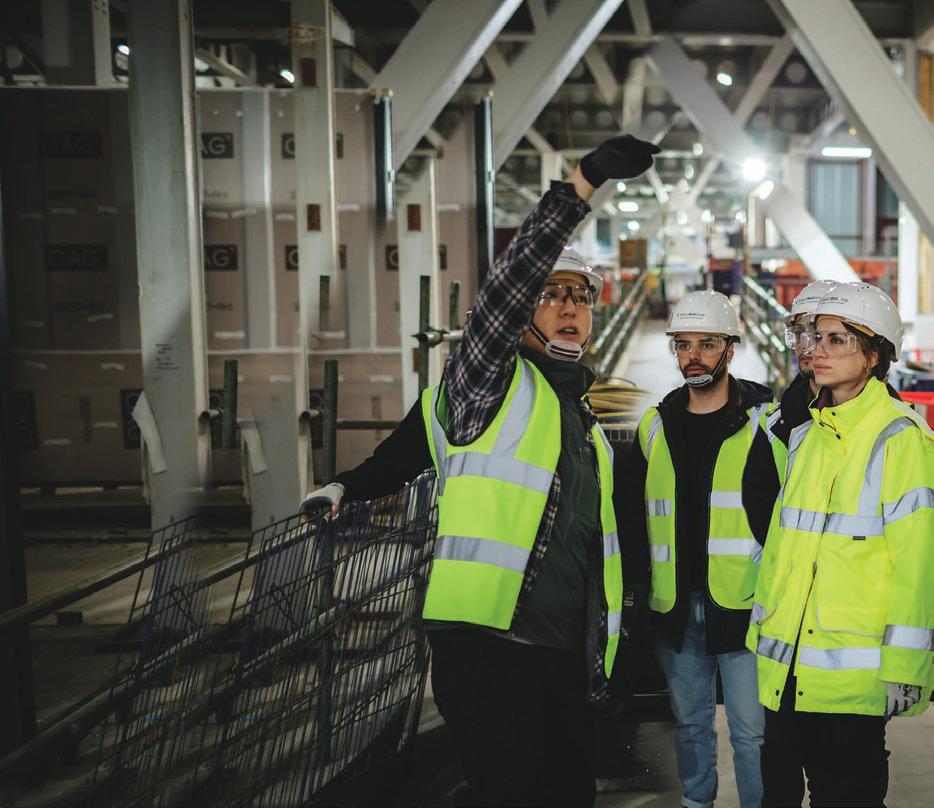
We
including opportunities for: • Structural/Civil Design Engineers (all levels) • Structural/Civil Drafting Technicians (all levels) • Construction Engineers • BIM Production/Digital Leads (Australia) To apply, please forward your CV and cover letter, indicating your location preference(s) to employment@robertbird.com.au For more information visit robertbird.com/careers/
Life and income insurance
inspiring healthier communities. Join today. mas.co.nz
Leading questions
Amy Oding leads Vodafone’s network infrastructure strategy and roadmap development. She works with crossfunctional teams in New Zealand and globally to provide world-class mobile and fixed telecommunication services and unlock technology for customers. She has extensive experience in engineering design, capital investment planning, AI and automation, customer growth forecasting, and professional engineering leadership. She’s passionate about technology innovation that enables people and businesses to thrive. Amy leads Vodafone’s Mana Wāhine network and is a Women Leaders in AI Honouree from IBM.

What attributes make you a good leader?
Having the ability to inspire people and communicate goals simply and clearly to enable teams to understand the impact on business and society. Being curious and enthusiastic about sharing knowledge and adapting in a rapidly changing digital communications industry.
At the end of each day, what tells you whether you’ve been successful?
Seeing a sparkle in people’s eyes – for example when I help my team unblock a project issue; when people appreciate that they are making a difference for customers; when I see someone has learned something new.
What inspired you to become an engineer?
I first became aware of professional engineering from my brother who studied engineering. I was fortunate to join the University of Auckland’s Enginuity Day that informs female high school students
about exciting engineering careers and possibilities. I relished maths and science subjects at school, which helped me to gain the problem-solving capabilities to apply to real-life engineering challenges.
Who opened a key door for you?
Trail-blazing Vodafone Network Engineering General Manager Jeni Mundy, who responded to my cold call for job opportunities during my final year at engineering school. I was thrilled she offered me a role as an RF Design Engineer. At the same time, she triggered a graduate recruitment programme that subsequently developed many engineers.
How do you connect your work with a sense of greater good?
There are many ways engineering for good connects with my work. My passion for innovative technology and growing people’s knowledge has led me to contribute to the Institute of Electrical and Electronics Engineers ethics committee on an AI ethics for business and society framework. I promote STEM by sponsoring the “Mini Robot Rumble”, a creative high school competition run by the Auckland University Robotics Association. I’m proud to lead the Mana Wāhine network, to support the inclusion and career development of women, and women in technology.
What mistake have you learned from most?
Underestimating the time it takes to create people change compared to technology change. For example, transforming people’s knowledge and skills to adopt AI in a traditional infrastructure engineering
Amy Oding
Based in: Auckland Role: Strategic Planning Manager, Vodafone New Zealand
Education: Bachelor of Engineering (Hons), Electrical & Electronic, University of Auckland, 2000
workplace. I learned to focus my leadership on developing people to deliver the benefits of AI. We’re now continuing to develop AI and automation across multiple network engineering teams in a way that fosters positive human-machine interaction, so people and machines can be continuously developed.
How do you approach a difficult conversation with someone you lead?
Prepare yourself with facts and a growth mindset. Be clear about what you’d like to achieve in the discussion. Actively listen and show empathy and commitment to work together on the steps to a positive outcome.
Who is a leader in New Zealand you admire and why?
Ernest Rutherford, for his scientific contribution to the atomic model and a great Kiwi pioneer and thought leader.
What questions have you been asking yourself lately?
Are we doing enough on climate change?
Engineers can make a tremendous impact if we focus on technology advancements that are simple and achievable.
53Shorts | Ngā tūhinga poto me ngā pito kōrero
Karissa Hyde CMEngNZ IntPE(NZ) in: Christchurch of (Hons) (Civil), of
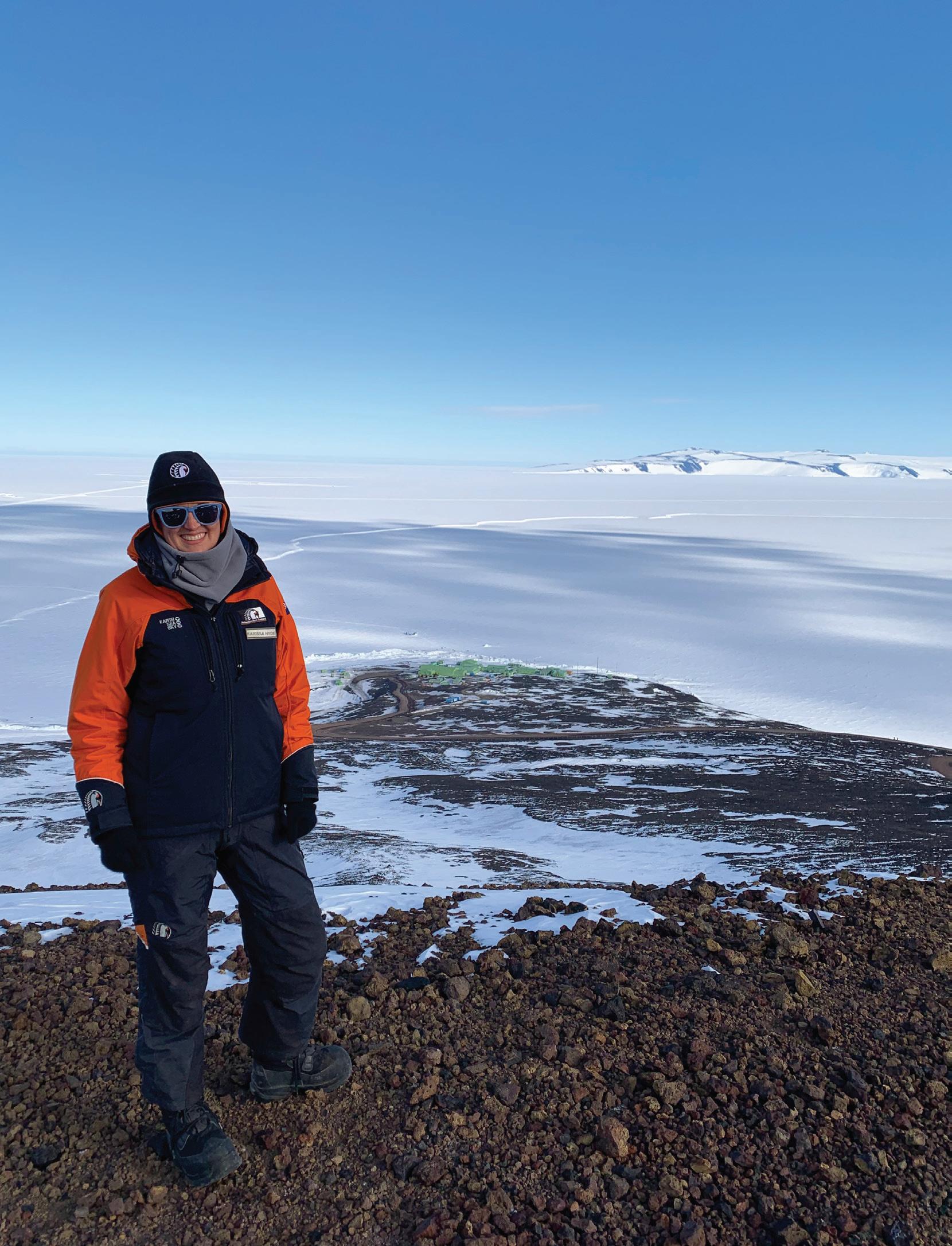
Karissa Hyde at Scott Base, Image:Antarctica.Supplied
Based
Role: Construction Manager, Antarctica New Zealand Education: Bachelor
Engineering
University
Canterbury, 2007 54 EG 20/2022
Inside job
I describe my role to non-engineers as… managing the construction side of the Scott Base Redevelopment project, including providing input into the design, establishing and managing contractors and construction contracts, and leading a team of project managers and engineers to deliver supporting projects.
The part of my job that always surprises people is… 90 percent of my role is based in Christchurch at our project office, with short visits to Antarctica and Timaru to oversee construction. As there are so many moving parts, multiple construction locations and a team of people to oversee I generally only go to Antarctica once a year, for up to two months.
The best emoji to sum up me on a typical workday is…
In the past year, I’ve pushed boundaries by… pushing to grow the team, spearheading recruitment and procurement to develop a team that can meet the growing needs of the project.
I admire engineers who… are open to new ideas, adaptable and always learning.
At school, teachers always described me as… talks too much, quite bright but tends to distract others.
My luckiest break was… when this job ad popped up on my LinkedIn feed when I was at home on maternity leave with my six month old.
3 things I love about my job: The challenge – working on such a unique project in such a special environment there are so many different aspects to consider in every decision, from logistics, the harsh environment and short summer construction season to the huge variety of stakeholders who are passionate about New Zealand’s home in Antarctica. Every day is Thedifferent.people
The best thing I’ve introduced at my workplace/in my role is… coordinated flexible working. The team are based in the office Monday to Wednesday (for collaboration), and staff are free to work wherever suits them best Thursday and Friday.
In my role, I always challenge… the why. If you can’t give a good reason why something needs to happen then it should be up for review.
At work, I’ve never been afraid to… change if something isn’t working – be it jobs, careers, solutions to a problem. I never get fixated on one thing. Just because something has been done one way for a long time doesn’t mean it is still the best way to do it, or best suited to you.
The bravest thing I’ve done to get where I am today… quit a well-paid job as a Geotechnical Engineer where I wasn’t happy to take a junior project management role where I could work my way up, closer to the construction side of the industry that I loved.
Best career advice I’ve received… don’t drop who you are to become what people think a leader should be. Who you are has gotten you this far and is valued by those who are closest to you.
I’d advise other people interested in my type of role to… build a broad base of experience across the industry, as this sets you up best to understand all the different areas covered by a client-side role. Also, always keep one eye out for that once-in-a-lifetime role, even if the timing mightn't seem ideal.
– I work with the most amazing and passionate team of people including the project team, consultants, contractors and the wider Antarctica New Zealand family, all dedicated to delivering a world class scientific research station for the next 50 years.
The place – the opportunity to visit Antarctica and work at Scott Base is a privilege.
2 reasons why I chose to study engineering:
I loved finding out how and why things worked.
I wanted to build things that would last and make a positive contribution to society.
1 thing I wouldn’t change about my workday:
The team. Working in a collaborative and passionate team to deliver the best project we can, while still having a laugh (and a lot of chocolate) makes even the hard days fun.
55Shorts | Ngā tūhinga poto me ngā pito kōrero
Bedside table
Mengjie Zhang FEngNZ
Role: Professor of Computer Science; Associate Dean (Research and Innovation), Faculty of Engineering; leader for data science and artificial intelligence Initiatives, Victoria University of Wellington Education: Bachelor of Engineering (Mechanical), Agricultural University of Hebei, China (1989); Master of Engineering (Artificial Intelligence and Agricultural Mechanisation), Agricultural University of Hebei (1992); Doctor of Philosophy in Computer Science (Artificial Intelligence), RMIT University, Melbourne, Australia (2000)
Mengjie Zhang FEngNZ has significantly contributed to ICT engineering research in artificial intelligence (AI) and data science and has more than 800 peer-reviewed publications and more than 21,000 citations to his name. He’s successfully applied his technical expertise to engineering applications in the primary industry and to address climate change, health/(bio)medical outcomes and hightech/high-value manufacturing. He co-led the establishment of the first New Zealand undergraduate AI major and postgraduate AI qualifications at Victoria University of Wellington and has supervised more than 50 PhD students. He’s working with iwi to attract more Māori students to AI and data science programmes. Mengjie is a Fellow of both the Royal Society of New Zealand and the Institute of Electrical and Electronics Engineers (IEEE) and an IEEE Distinguished Lecturer. He lived in China and Australia before settling in Wellington 22 years ago.

What’s on your bedside table? A reading lamp, a cup of water, an iPhone for my reading list. I like reading about history and philosophy and looking at things from a historical point of view,
keeping a cenatralised view. I’m a night person so typically I go to sleep after 1am or 2am and I hate getting up before 7am.
Let’s focus on that reading material, what’s behind your choices?
I don’t like reading physical books (except when I was on long flights before Covid-19 when I regularly went to Europe for research conferences and events two or three times per year, frequently reading books, magazines or a PhD thesis). I do like reading online news from different sources, not only from main western streams, but also from Asian channels.
How does your reading help your work? Reading books and materials in other areas can keep my brain “clear” in research, teaching and service at the University. The historical lessons and experience can help my scientific and engineering research – I choose to trust facts, science and historical experience instead of the current opinions from social media – I am an old-style person! I believe multidisciplinary ideas and materials help my research in ICT engineering, particularly AI, machine learning, data
56 EG 20/2022
science and computer science that are my academic and research fields. These fields impact most engineering professionals. I strongly believe ICT engineering will have a huge space to develop, grow, and be applied to many other engineering professions.
What is the top book you’d recommend to other engineers and why?
Artificial Intelligence: A Guide for Thinking Humans by Melanie Mitchell. As AI and machine learning techniques are so useful for all engineering fields and our daily lives, it would be helpful if our engineering professionals have some general knowledge of AI.
What publication has most influenced your career?
The lectures and books by Professor Pusheng Kuang in China in the late 1980s. He was the first person who successfully used and applied AI techniques to mechanical engineering in China. Modern Machinery Fault Diagnosis Principle and Techniques was the first book in China that applied AI techniques to equipment fault diagnosis with future trends. More than 30 years later, the patterns he identified then are still in the “frontier” of engineering and researchagricultural/horticultural/aquaculturalnow.
What work-related books are on your must-read list?
Zbigniew Michalewicz’s How to Solve It: Modern Heuristics and Genetic Algorithms + Data Structures = Evolution Programs are top of my list. They connect AI and evolutionary computation to engineering applications.
What do you read for fun?
Old historical stories and modern international news. I also look at the impact metrics for non-engineering professions, particularly those in social sciences and legal fields.
SPEED READ
Ebook/paper copy
Bookmark/Borrow/ownturn down page
Review
Aroha – Māori Wisdom for a Contented Life Lived in Harmony with Our Planet
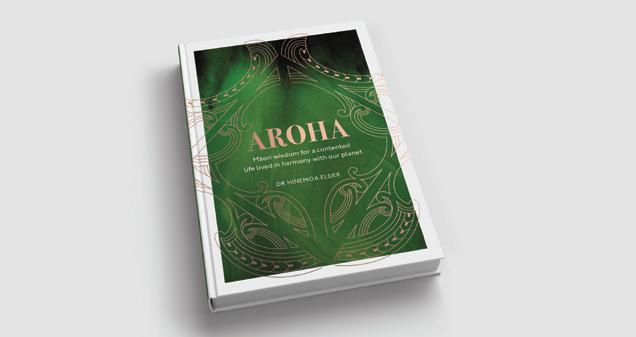 By Hinemoa Elder
By Hinemoa Elder
Publisher: Penguin Random House
RRP: $30
With Te Wiki o te Reo Māori in September (12–18) and Mental Health Awareness Week also kicking off later that same month, (26 Sept–2 Oct), this book beautifully weaves together the two
Writtenareas.byHinemoa
Elder MNZM, Aroha - Māori Wisdom for a Contented Life Lived in Harmony with Our Planet, contains the timeless wisdom of Māori proverbs. The book comprises 52 whakatauki – simple, powerful life lessons – and there’s one for every week of the year. Hinemoa is a child and adolescent psychiatrist who works at Starship Hospital’s Child and Family and Mother and Baby Units and various community clinics. She explains each whakatauki to show people how to live a less stressful daily life, with more contentment and kindness for each other and the planet. The book looks at how the power of aroha can help you each day, and through its many meanings – fundamental Māori values – create a happier world. Chapters include manaakitanga (love for each other); kaitiakitanga (respect for our planet); whanaungatanga (community and connectivity) and tino rangatiratanga (selfdetermination).Thetop-selling New Zealand non-fiction title of 2021, Aroha also got a shout out from Oprah Winfrey with a mention on one of the Oprah’s Book Club lists. At the time of publishing, Aroha continued to feature as one of the week's top 10 biggest-selling New Zealand books, as recorded by the Nielsen BookScan New Zealand bestseller list.
57Shorts | Ngā tūhinga poto me ngā pito kōrero
Dr Desmond Patrick Taylor FEngNZ 1941–2022

Emeritus Professor Desmond (Des) Taylor FEngNZ was a celebrated leader in digital wireless communications. Born in Quebec, Canada, he gained Bachelor of Science (Eng) and Master of Science (Eng) degrees from Queen’s University, Kingston, Ontario, in 1963 and 1967 respectively, and a PhD in Electrical Engineering from McMaster University, Ontario, in 1972. From July 1972 to June 1992, he was with the Communications Research Laboratory and Department of Electrical Engineering of McMaster University. He then joined the University of Canterbury as the Tait Professor of Communications. He established the Communications Research Group, which remains active today in conjunction with the Wireless Research Centre. He supervised a substantial number of students during his career, many of whom have continued in the field in both industry and academia. His impact in the field lives on in their work and through his publications. Des made substantial research contributions for more than 50 years in the field of digital wireless communications systems. His primary focus was on the development of robust, bandwidth-efficient modulation and coding techniques, and the development of iterative algorithms for joint equalisation and decoding of the fading, dispersive channels typical of mobile radio communications. He authored or co-authored more than 250 published papers and held several patents. He remained an active researcher throughout his retirement. He was a Fellow of the Institute of Electrical and Electronics Engineers, the Royal Society of New Zealand, Te Ao Rangahau and the Engineering Institute of Canada.
Ernesto Emilio Henriod FEngNZ 1936–2022
Born in Lima, Peru, Ernesto Henriod FEngNZ grew up in a remarkable time in the history of that country where, after completing his Master’s degree in Civil Engineering, he worked on the design and construction of numerous infrastructure projects across the country. After a short period in the United Kingdom in the early 1960s, back in Peru he was responsible for the construction management of an extensive highway and water supply line that traversed across the Peruvian Andes Range, bringing transport and water connection services from the Amazonian jungles to the expanding city of Lima.
In 1975, Ernesto with his Kiwi family moved to Christchurch were he quickly established himself in the construction industry, becoming Southern Manager for Fletcher Construction. In 1979, he was shoulder tapped by the World Bank and the family moved to Washington DC, where Ernesto worked for 18 years in positions ranging from procurement policy to senior management; retiring in 1998 as Director of the Bank’s Headquarters construction team.
Back in New Zealand he became an advisor to the Centre for Advanced Engineering (CAENZ) before once more “retiring” in July 2011. In this role he made important contributions, both to CAENZ and to the Asia Construction Academy of Singapore. He was also a consular representative for Peru within the South Island.
Ernesto contributed a great deal to engineering in New Zealand, particularly by championing new forms of civil engineering and building contracts, and alternative dispute resolution approaches. He authored and co-authored three books, and numerous papers and policy documents on construction and management. He was renowned and respected throughout the civil construction industry.

Obituaries 58 EG 20/2022
Robert John Collins (Rob) CMEngNZ (Eng. 1975–2022Technologist)

Rob Collins CMEngNZ (Eng. Technologist) began his engineering journey at the Central Institute of Technology in Upper Hutt then graduated from the University of Canterbury with a Bachelor of Engineering (Civil) (Hons) in 1998. He became a member of Te Ao Rangahau in 1998. He began his working life with two years at the Wanganui City Council before leaving for extensive travels overseas. As well as travelling, he worked as a civil engineer in the United Kingdom. On his return to New Zealand he worked for a range of engineering companies.
Rob’s involvement in engineering was varied and included assessing damage after the Christchurch and Kaikōura earthquakes. As a child, Rob had always wanted to build bridges and was able to fulfil his goal designing the overhead bridge at the top of the Wainuiomata Hill Road in Lower Hutt.
Those who knew Rob as a friend could always count on his steadfastness. He was involved in a very diverse range of both outdoor and technological interests and could turn his hand to anything. He will remain a much-loved son, brother and uncle whose family will take comfort looking at “his bridge at the top of the hill”.
Born and raised in Dannevirke, Douglas Bullick FEngNZ studied mechanical engineering at the University of Canterbury and graduated in 1943.
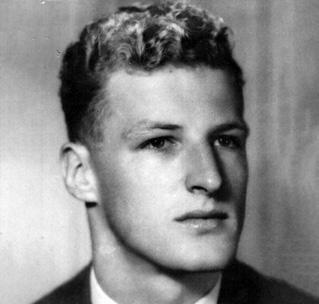
From August 1942 to January 1945, Doug worked for the then Department of Scientific and Industrial Research, designing and testing components for radar installations.
In March 1945 he joined the Army and travelled to Europe. After the war, he worked for Northampton Electric Light and Power Company, then returned home in August 1948 and worked for the New Zealand Electricity Department. In 1957 he joined the Central Waikato Electric Power Board as Assistant Engineer and became Chief Engineer in January 1968. He remained there until his retirement in 1982. Doug’s specialist field was electricity distribution (both overhead and underground lines), high voltage substations, design, construction, and maintenance.Duringhistime with the Board in Waikato he established the central school for training electric linesmen and was on the electrical industry’s safety committee. He was very safety conscious and jointly responsible for safe working practices in the electrical supplyDougindustry.willberemembered as a fair boss. As an assessor for employers at the annual electrical workers award, he was strong, but always aware of staff welfare and safety.
He was also a Justice of the Peace and involved with a number of organisations in the community.
Douglas Thomas Alexander Bullick FEngNZ 1921–2022
59Obituaries | Ngā rārangi ingoa mate
toMademove
Recipient of a Bronze Award in the Lifesaving & LifeChanging category of the prestigious, global 2022 Edison Awards, Permobil’s Explorer Mini offers independence. It gives young children with mobility impairments the opportunity to independently explore their environment. Infants begin to learn about and interact with their world from birth through self-directed mobility. The typical developmental sequence becomes altered for children with medical conditions limiting their ability to sit unsupported, crawl or reach. This product’s design allows the child to initiate the movement, firstly interacting with their immediate personal space, then progressing to exploring their environment. This lightweight, ergonomic device has multiple weight-bearing surfaces to help promote safe, stable, upright posture and improve strength and endurance. The device is motorised and the child controls the chair using a joystick. Time labelled it one of the best 100 inventions of 2021.
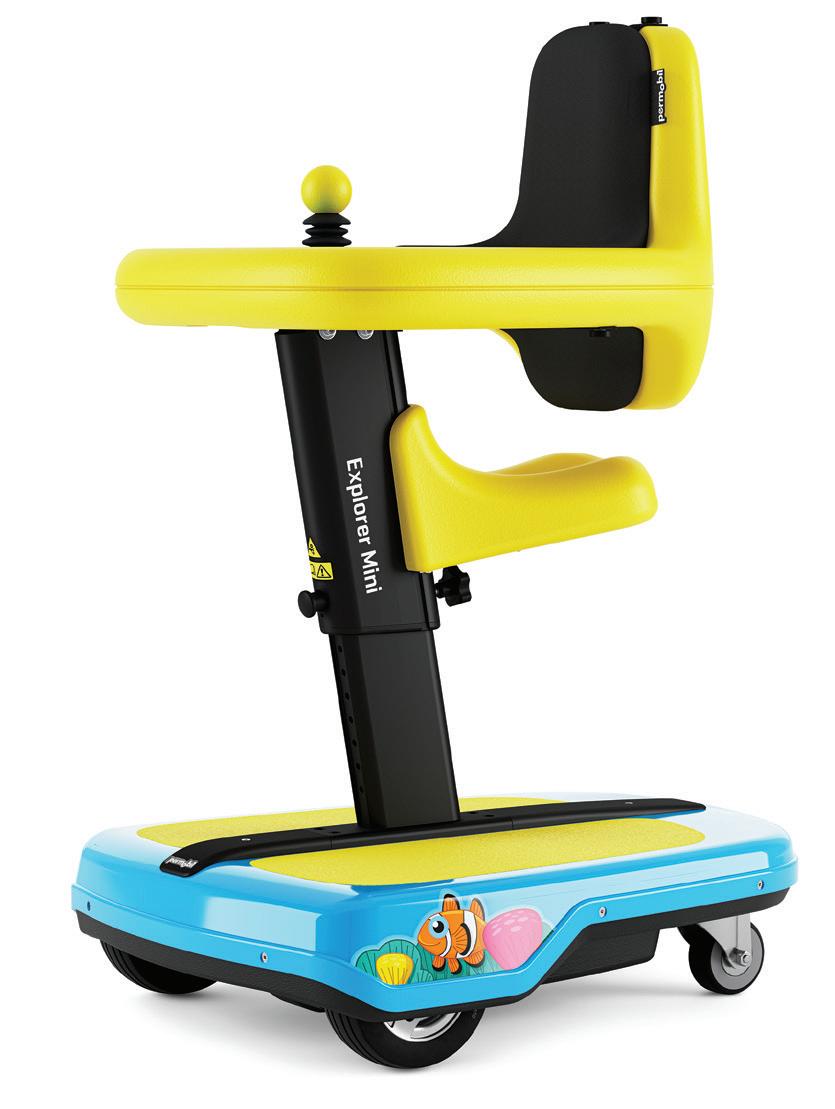
Yellow joystick ball secured for safety and encourages hands and eyes to come to midline
Supportive integrated table and backrest allows freedom of movement
Narrow sides encourage lateral weight shift for reaching objects in
Telescopingenvironmentcolumn with tool-less adjustment allows for supportive sitting or incremental standing position
Compact front wheel drive base for exploring in tight spaces
Sloped saddle seat promotes anterior pelvic tilt
Supports lower extremity weight bearing
Stable platform with non-slip surface
Engineering genius
60 EG 20/2022
Tested and trusted for 60 years.
We make SEISMIC® reinforcing steel to a high standard. Then we put it through a rigorous testing regime to prove it.
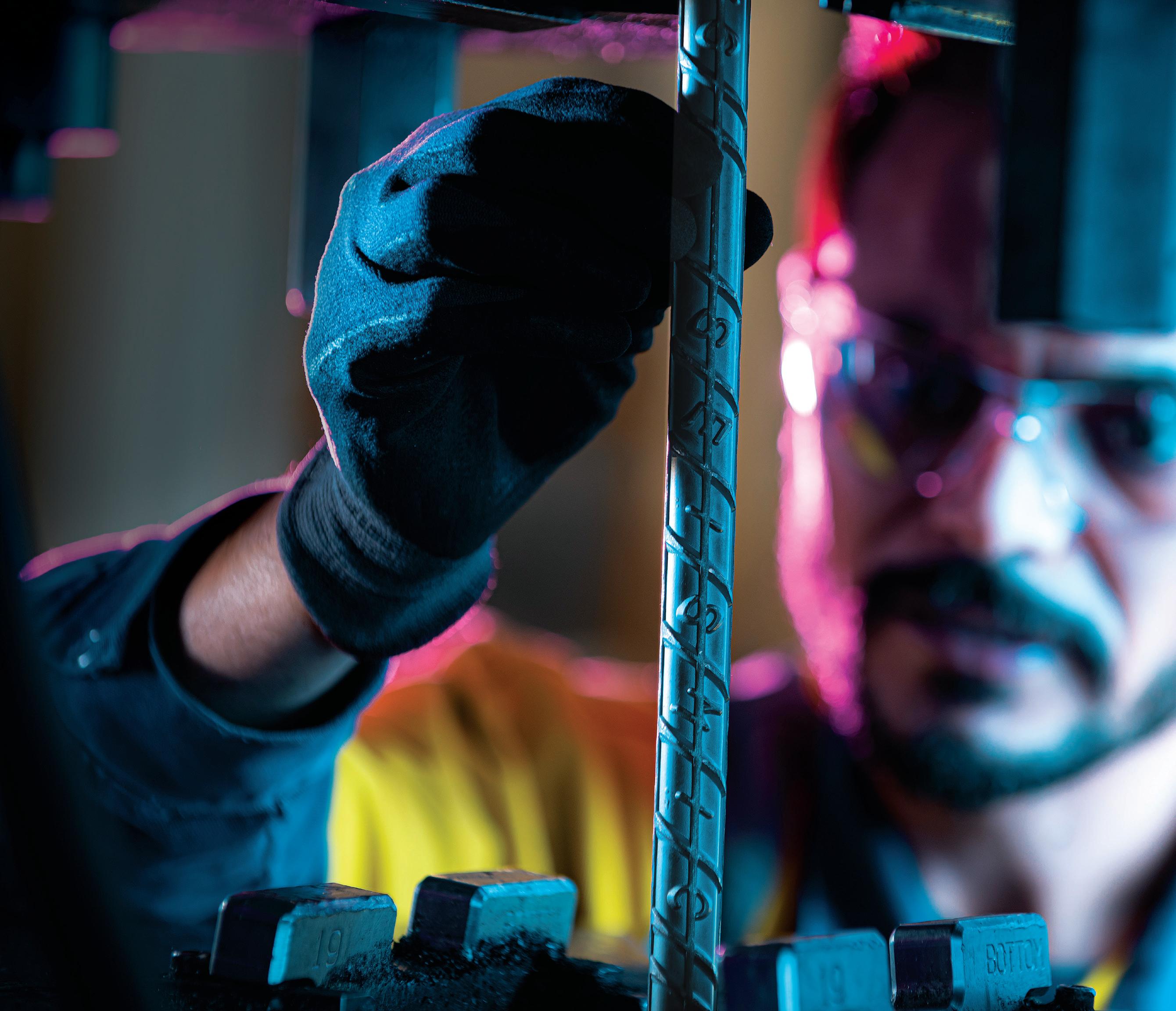
All SEISMIC® products are tested in our dedicated IANZ-certified laboratory to ensure they meet the stringent AS/NZS 4671 Standard.
Our products are designed for New Zealand’s unique conditions, by a team which has been manufacturing locally for 60 years.
That’s why we’ve been entrusted with some of the country’s most significant infrastructure and
building projects, and why people continue to turn to us for strength they can count on. For assurance, confidence and credibility, choose SEISMIC® by Pacific Steel. For more information, contact us at info@pacificsteel.co.nz or visit pacificsteel.co.nz


IS YOUR Dr“ICOMMITTED?FIRMseetheDiversityAgendaasamovementthatwillhelpAotearoaNewZealandtobuildaworkforceintheengineering,architectureandconsultingsector,whichismuchmorereflectiveofthecommunitiesandpeoplethatweserve.”BrettOgilvie(NgātiWhakahemo/NgātiAwa) Tonkin + Taylor – Director/Executive Leader in Sustainability Member of the Diversity Agenda Steering Committee Join the movement. Sign the Accord. diversityagenda.org
